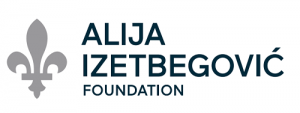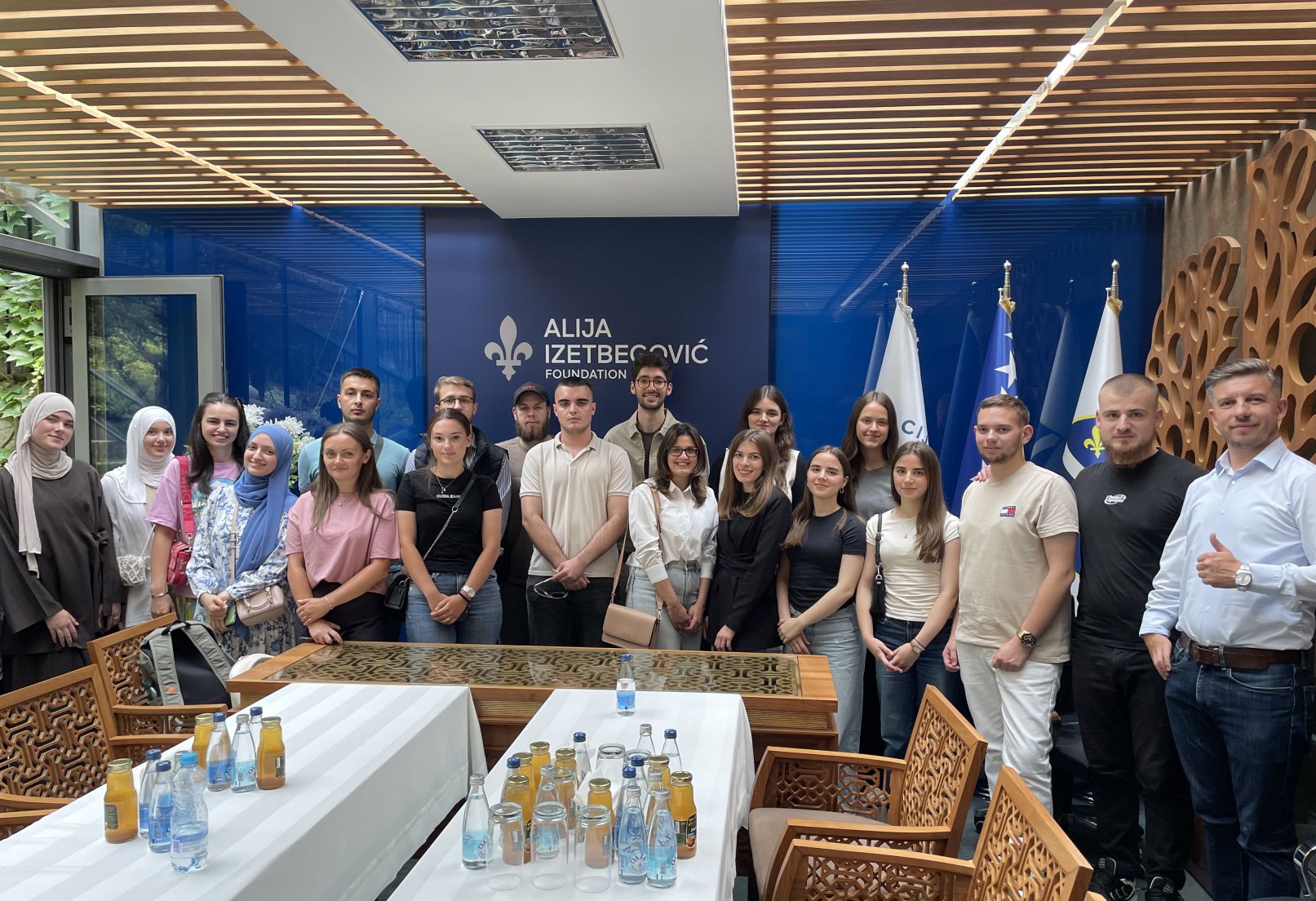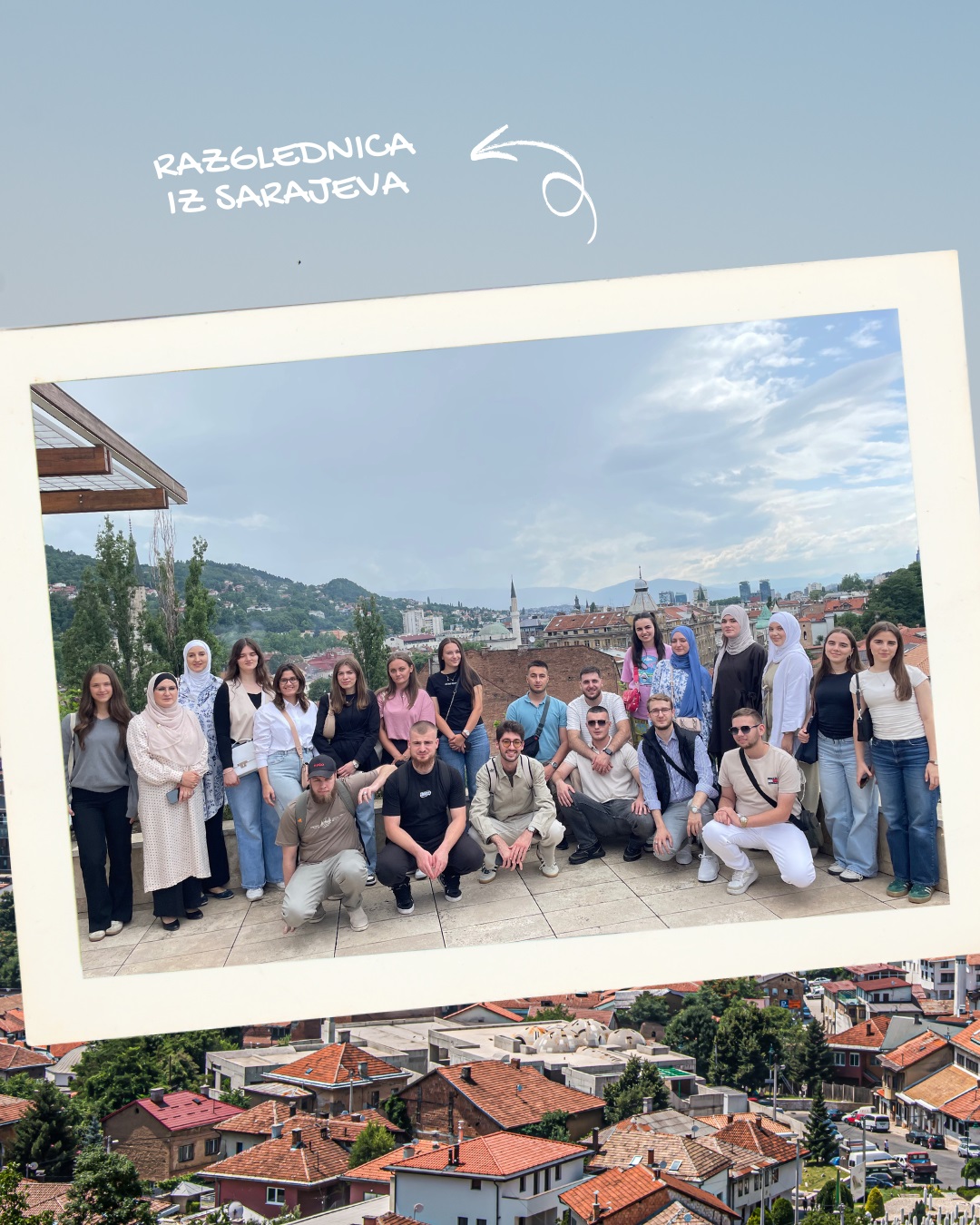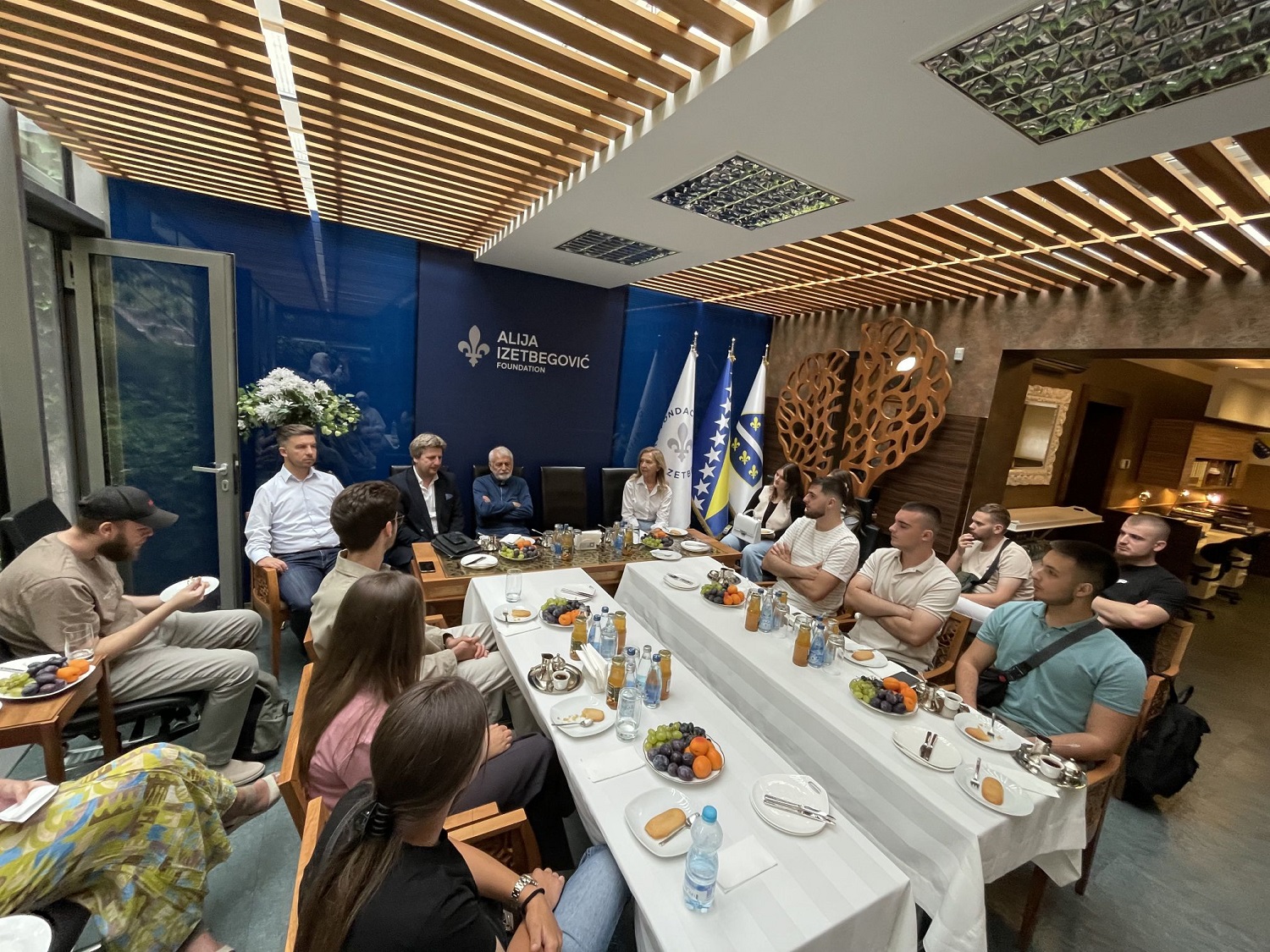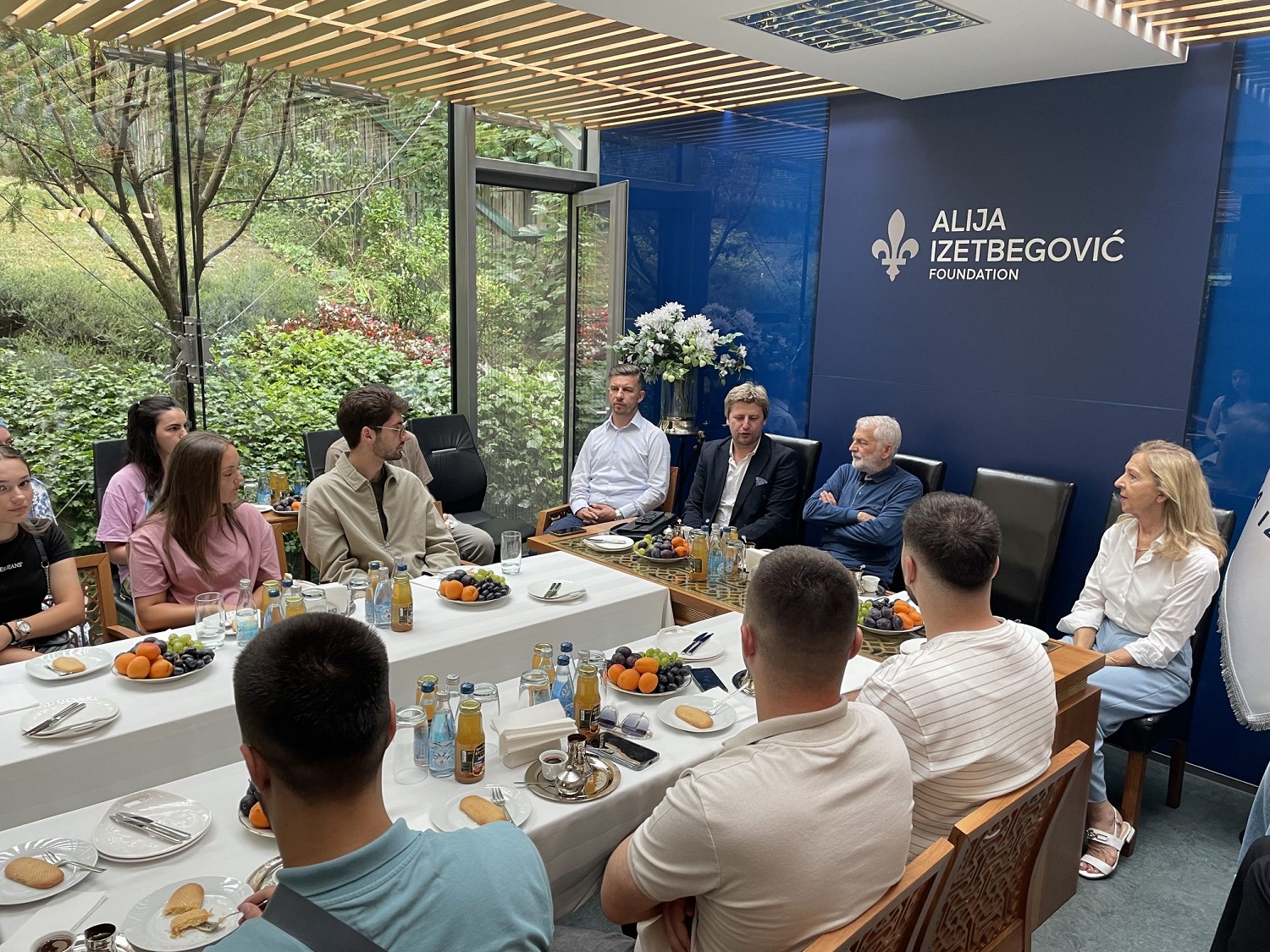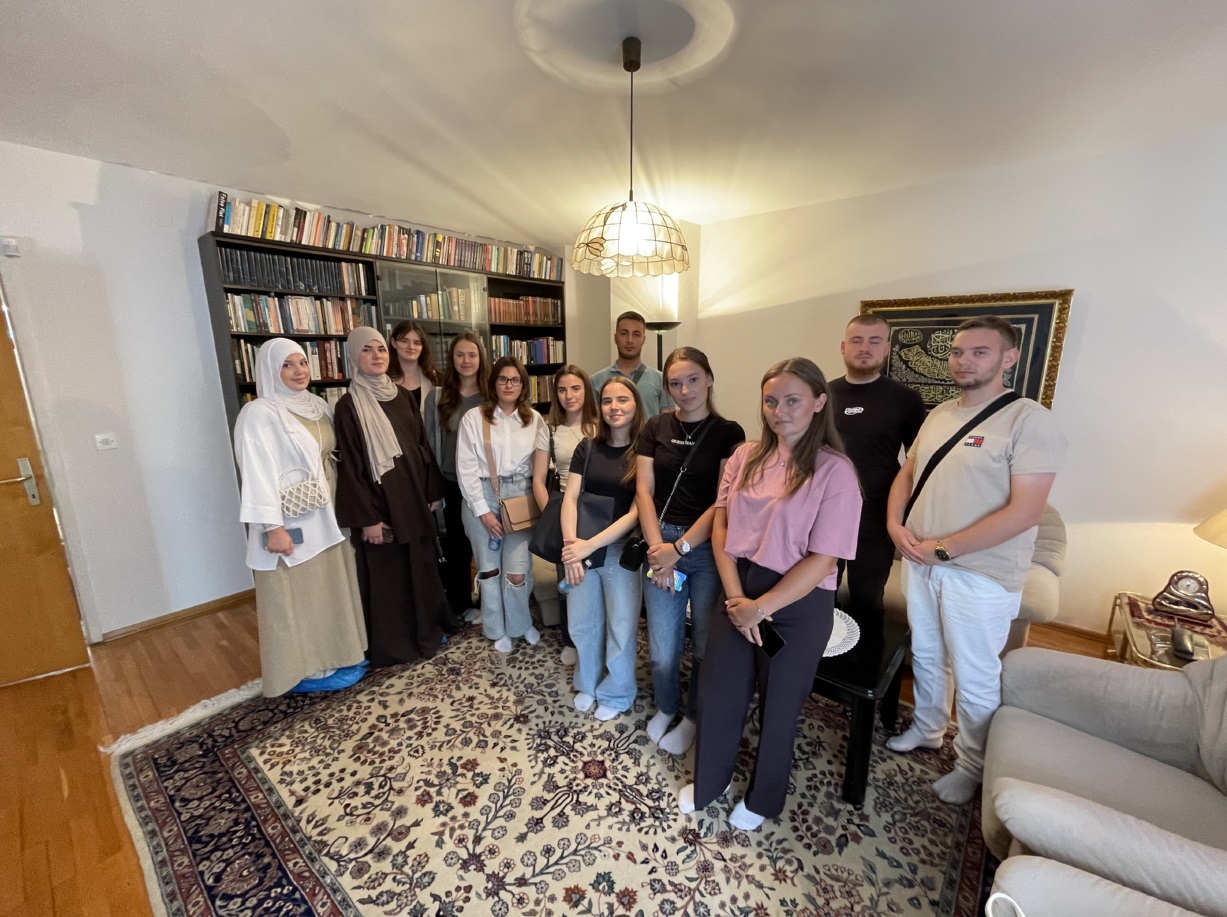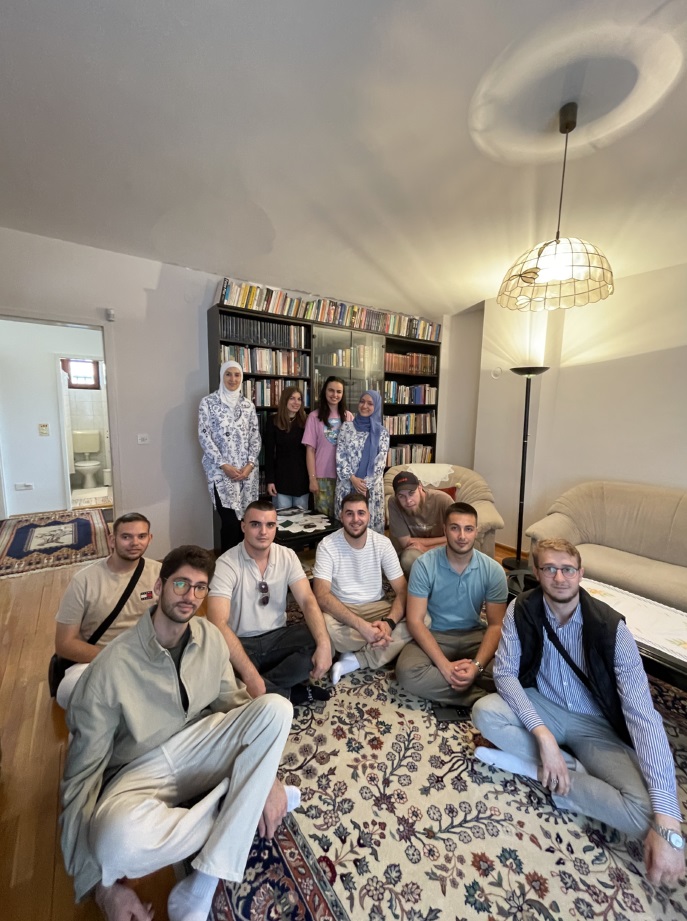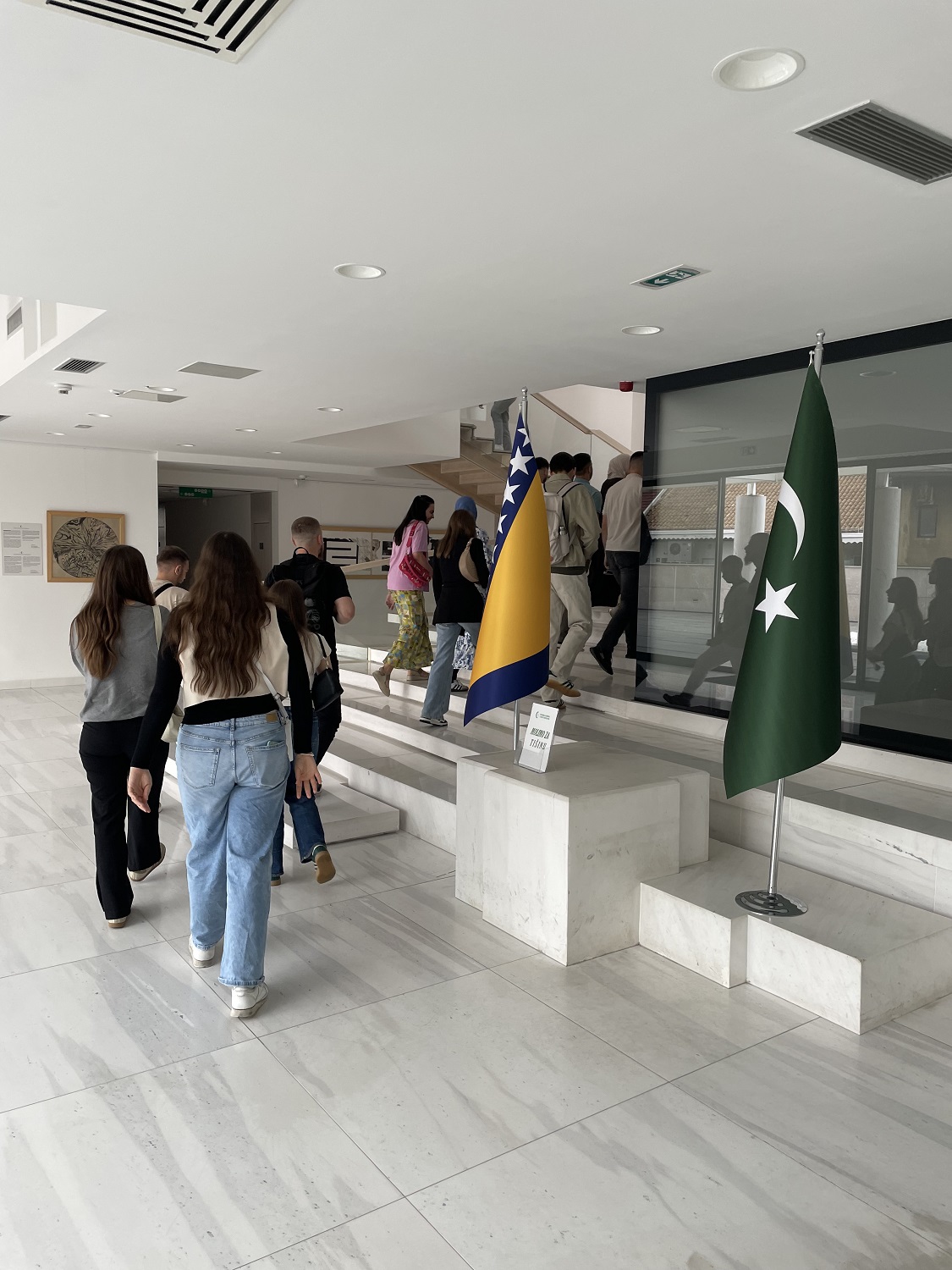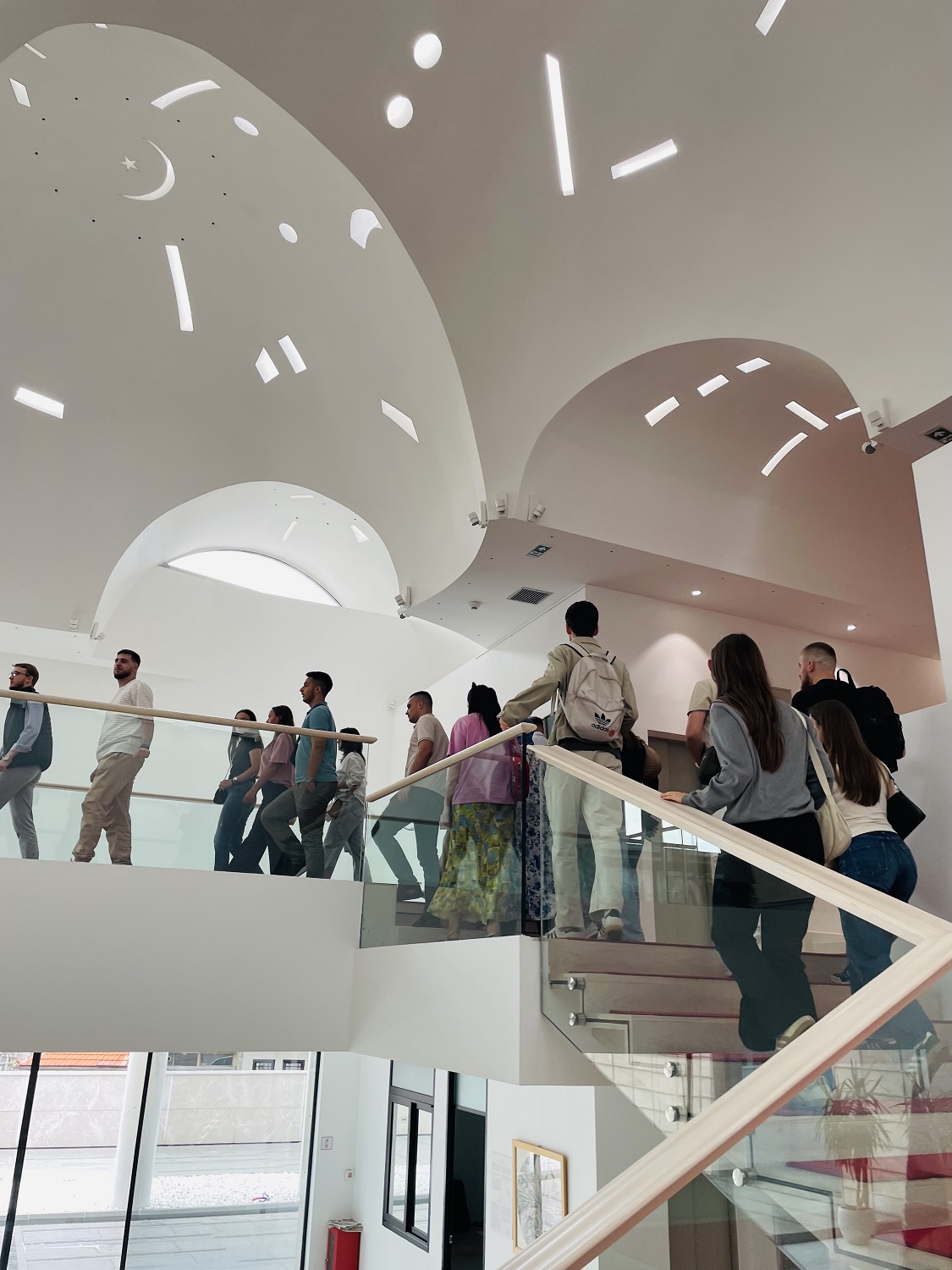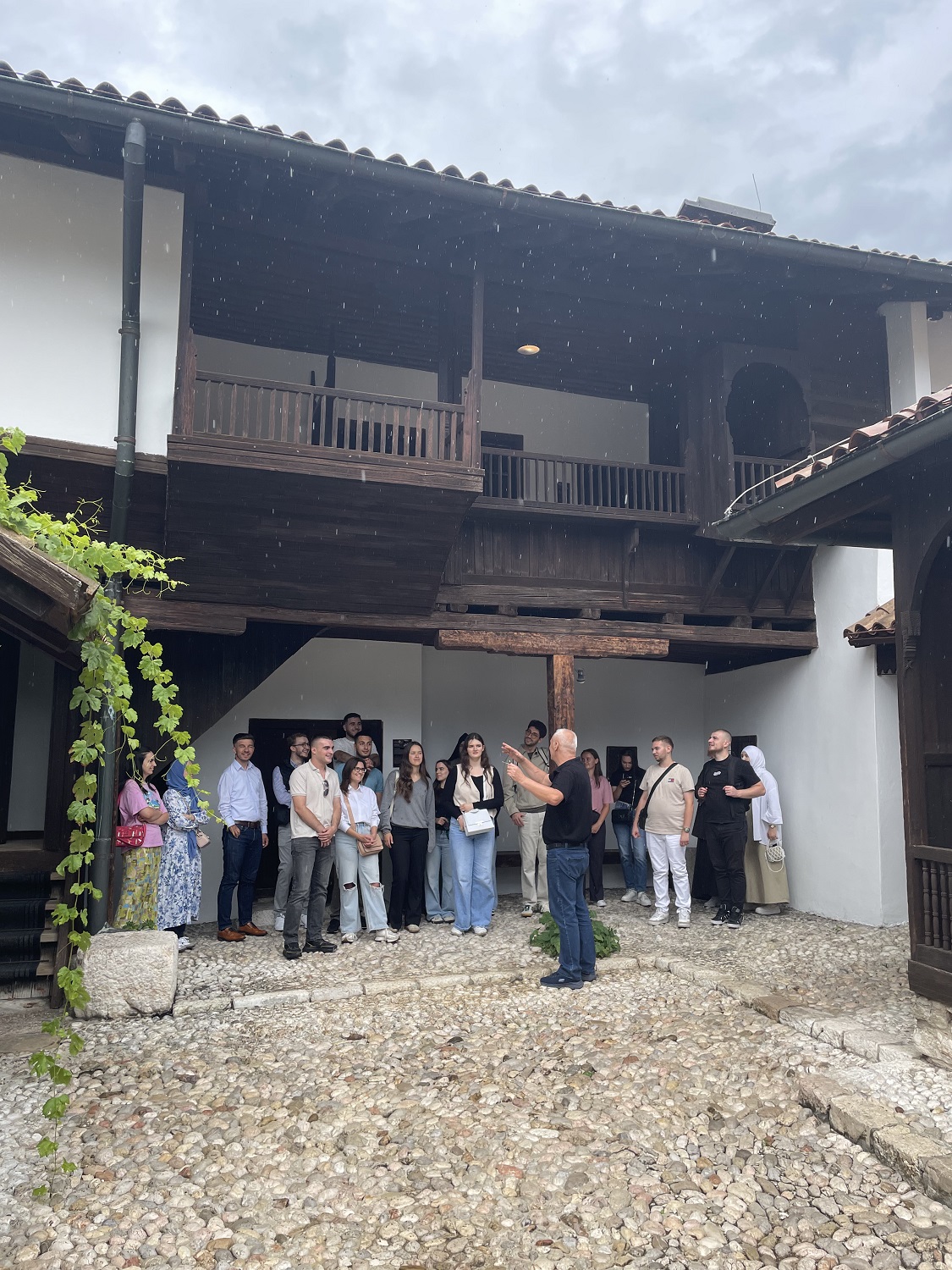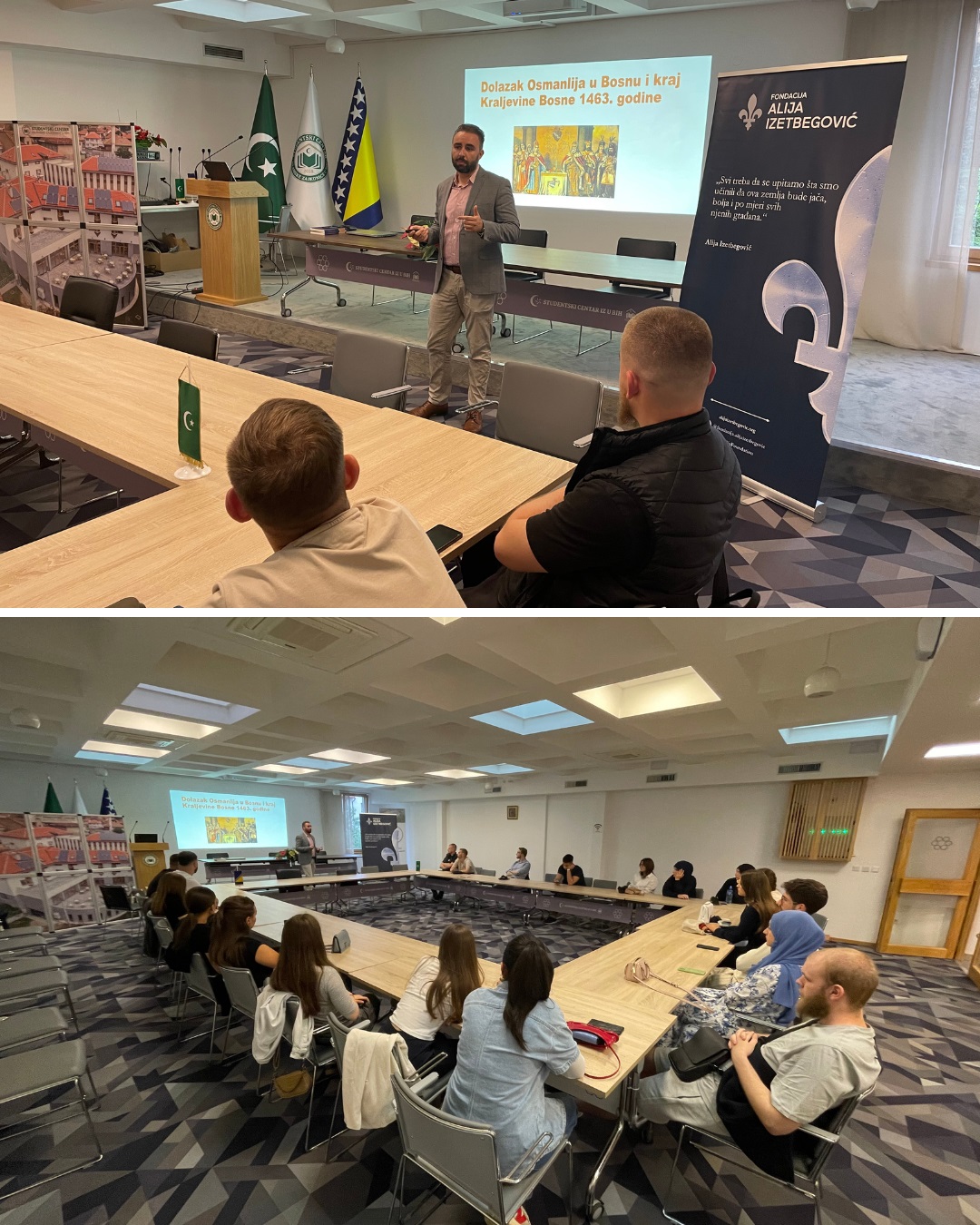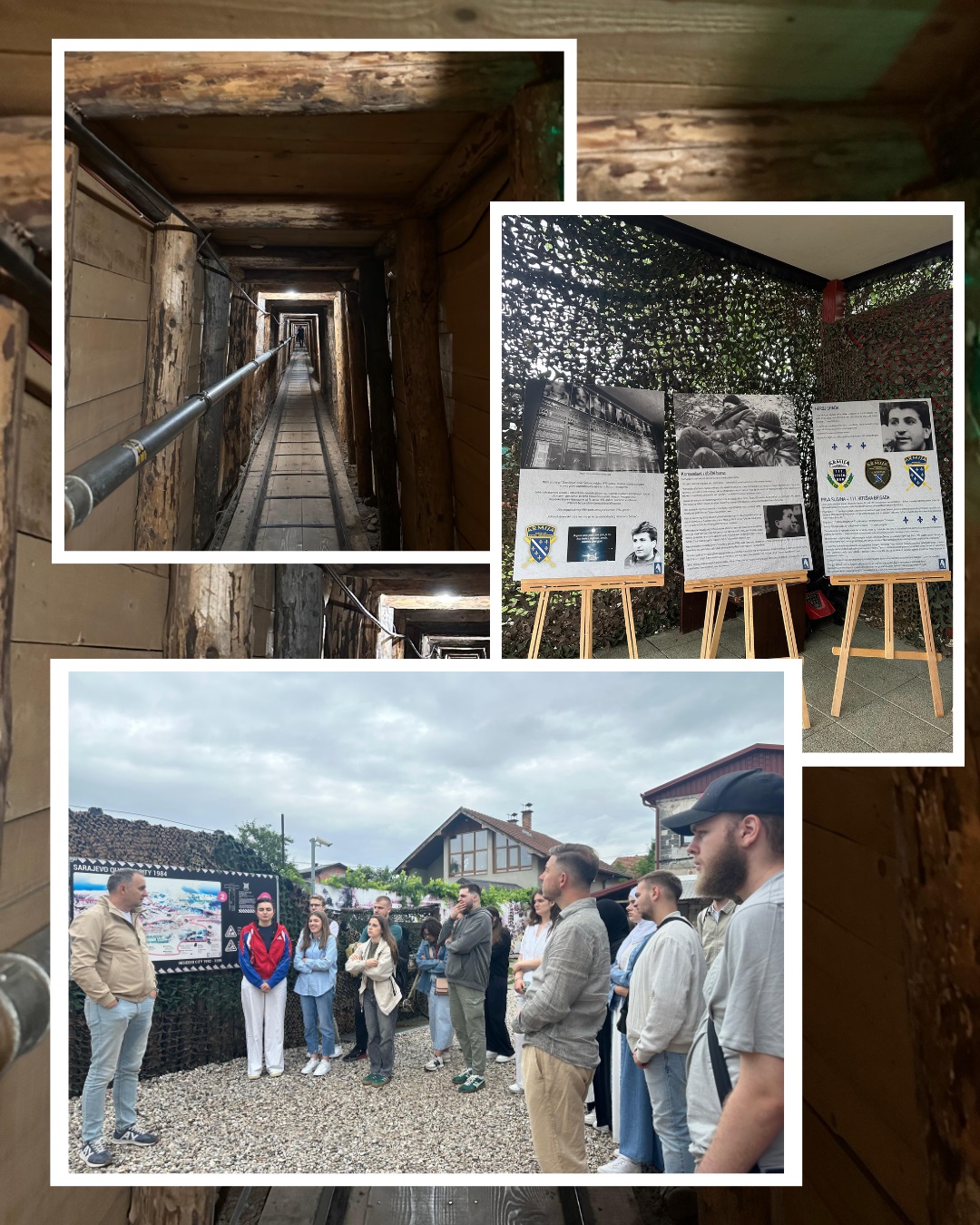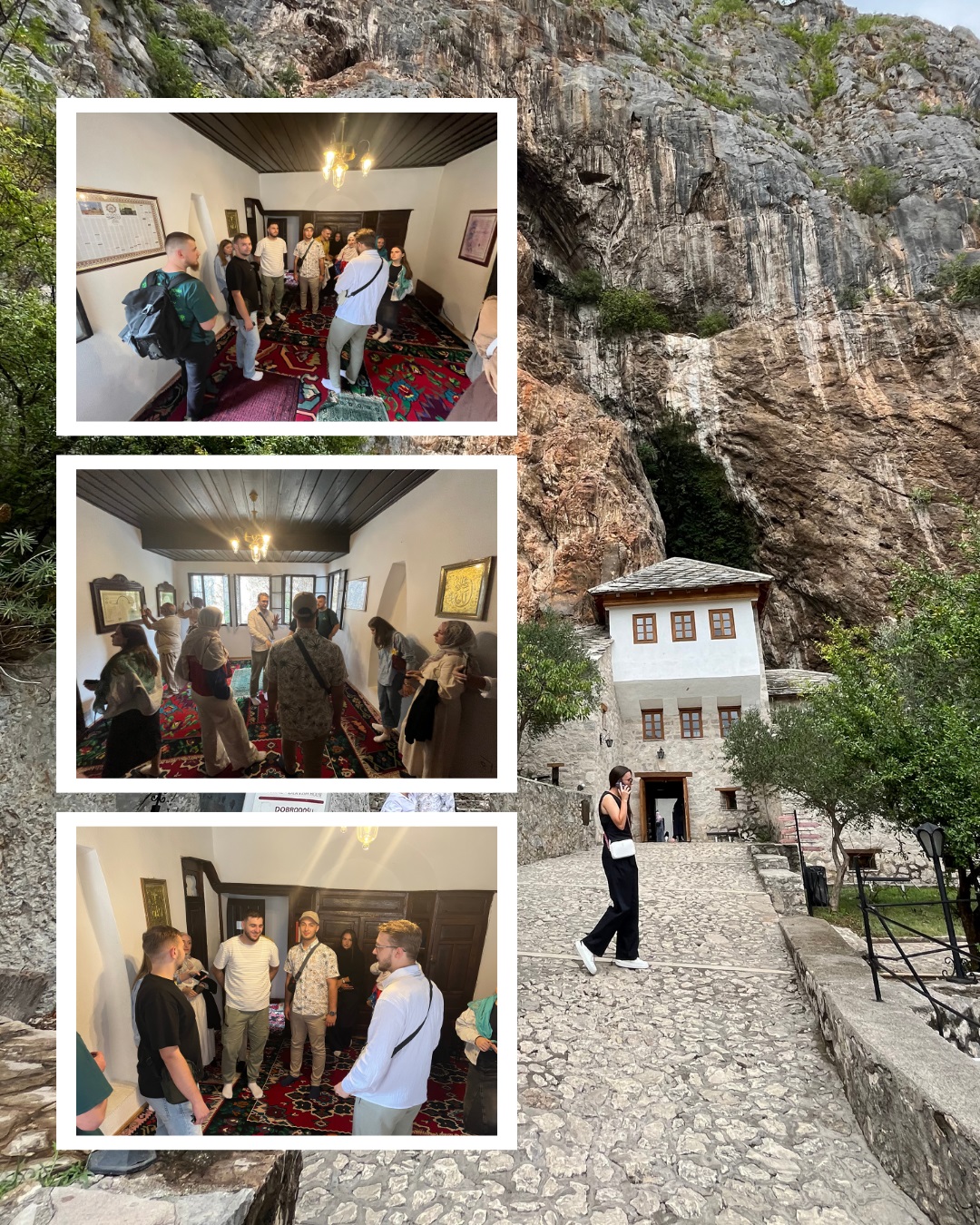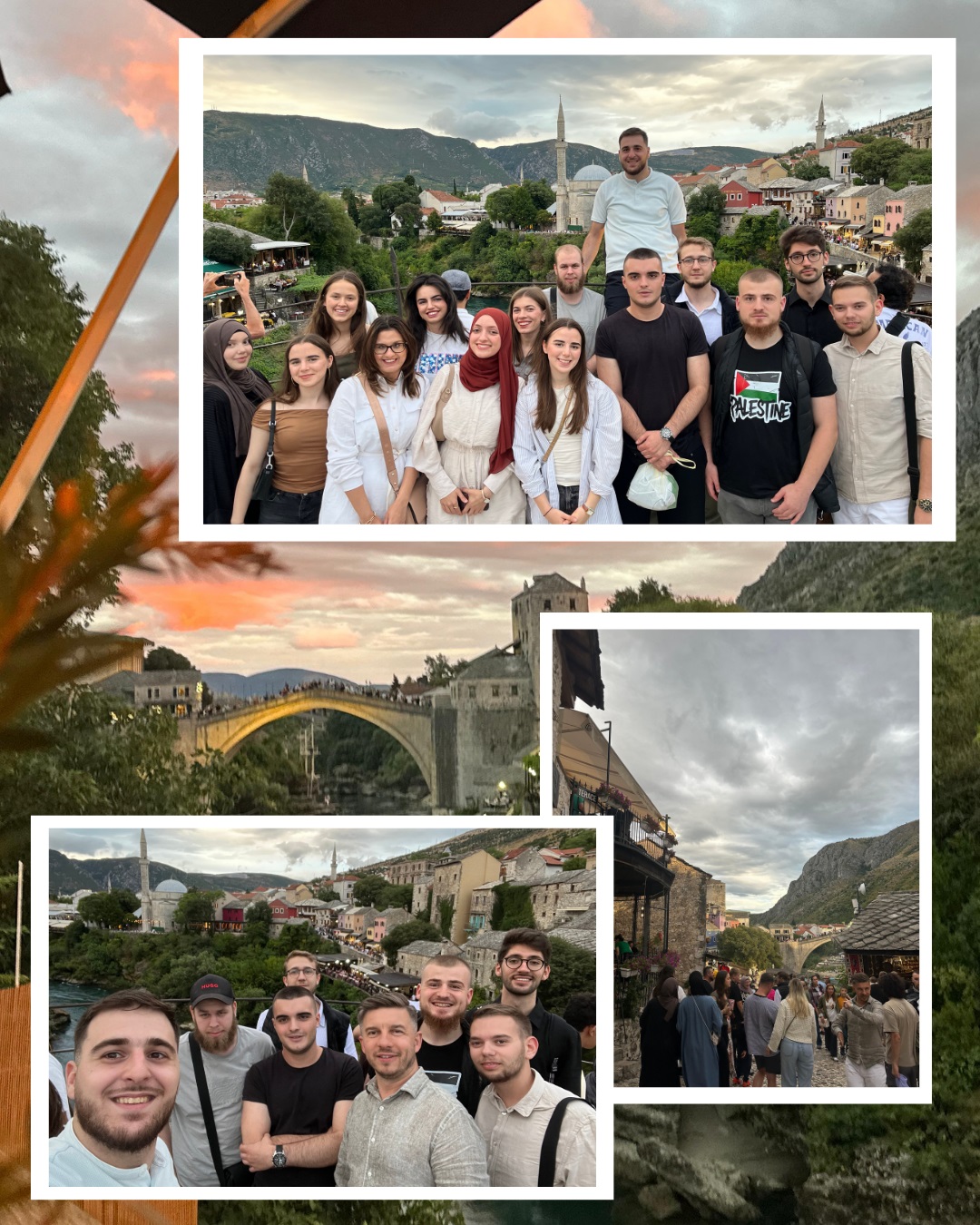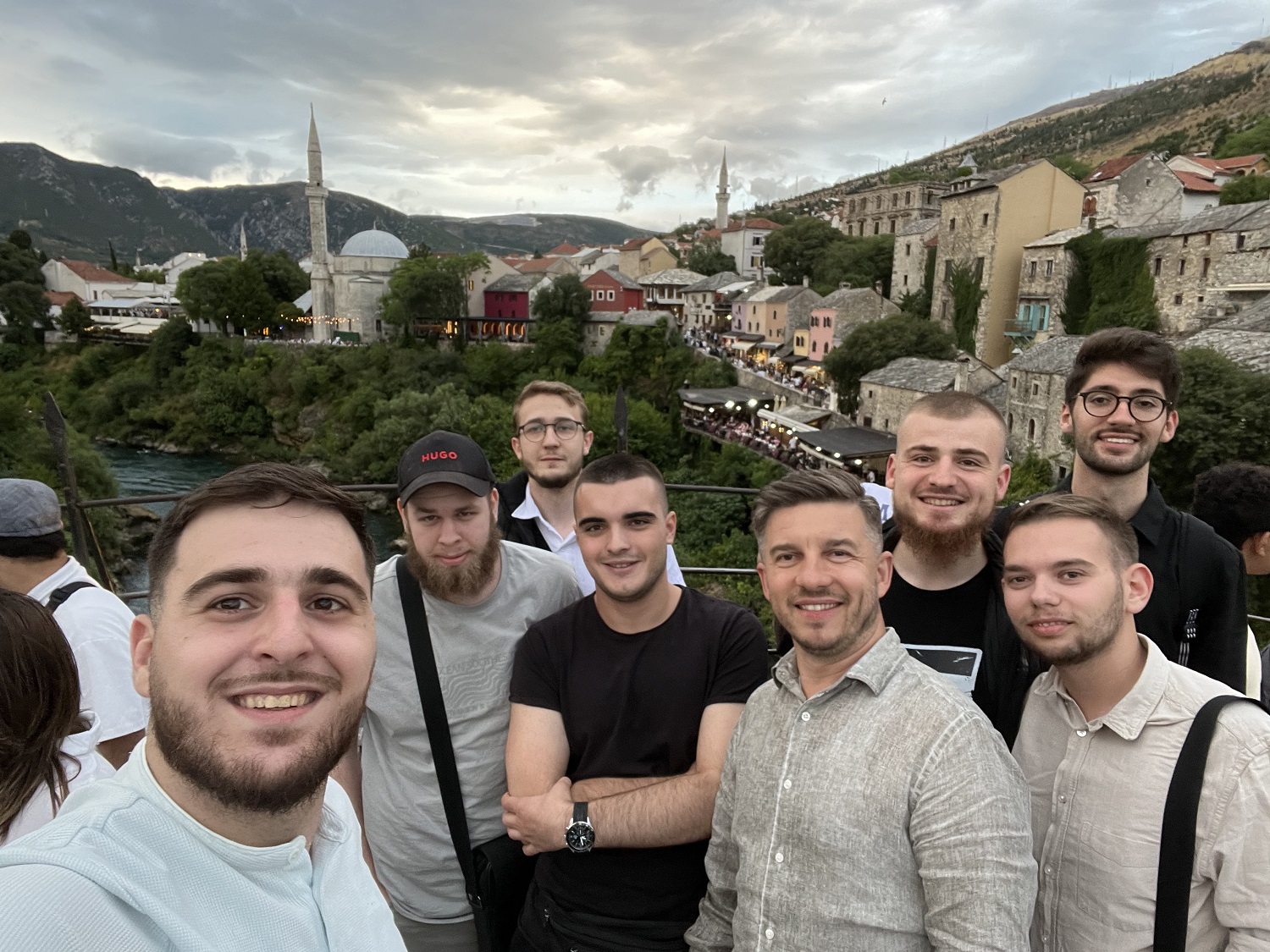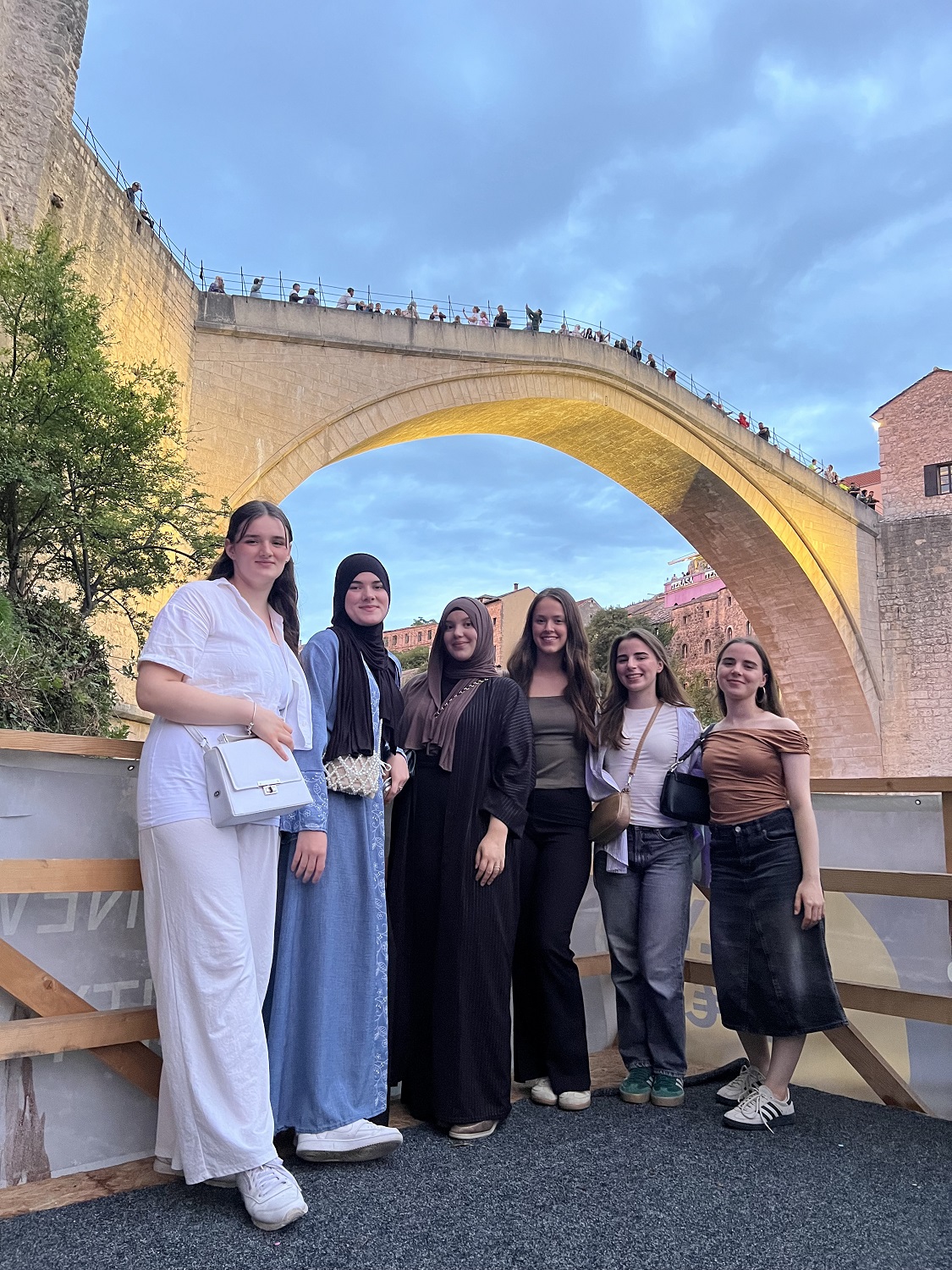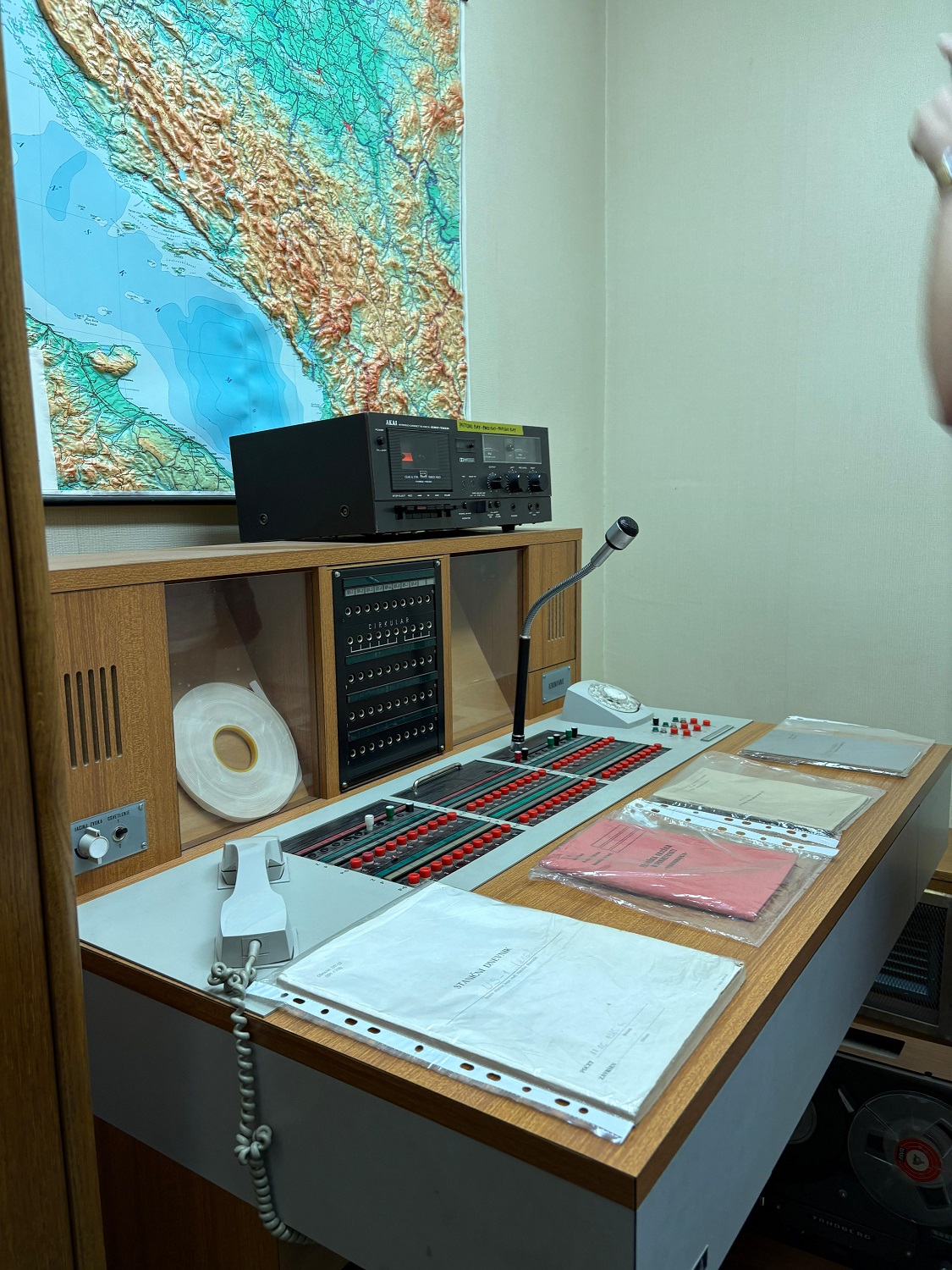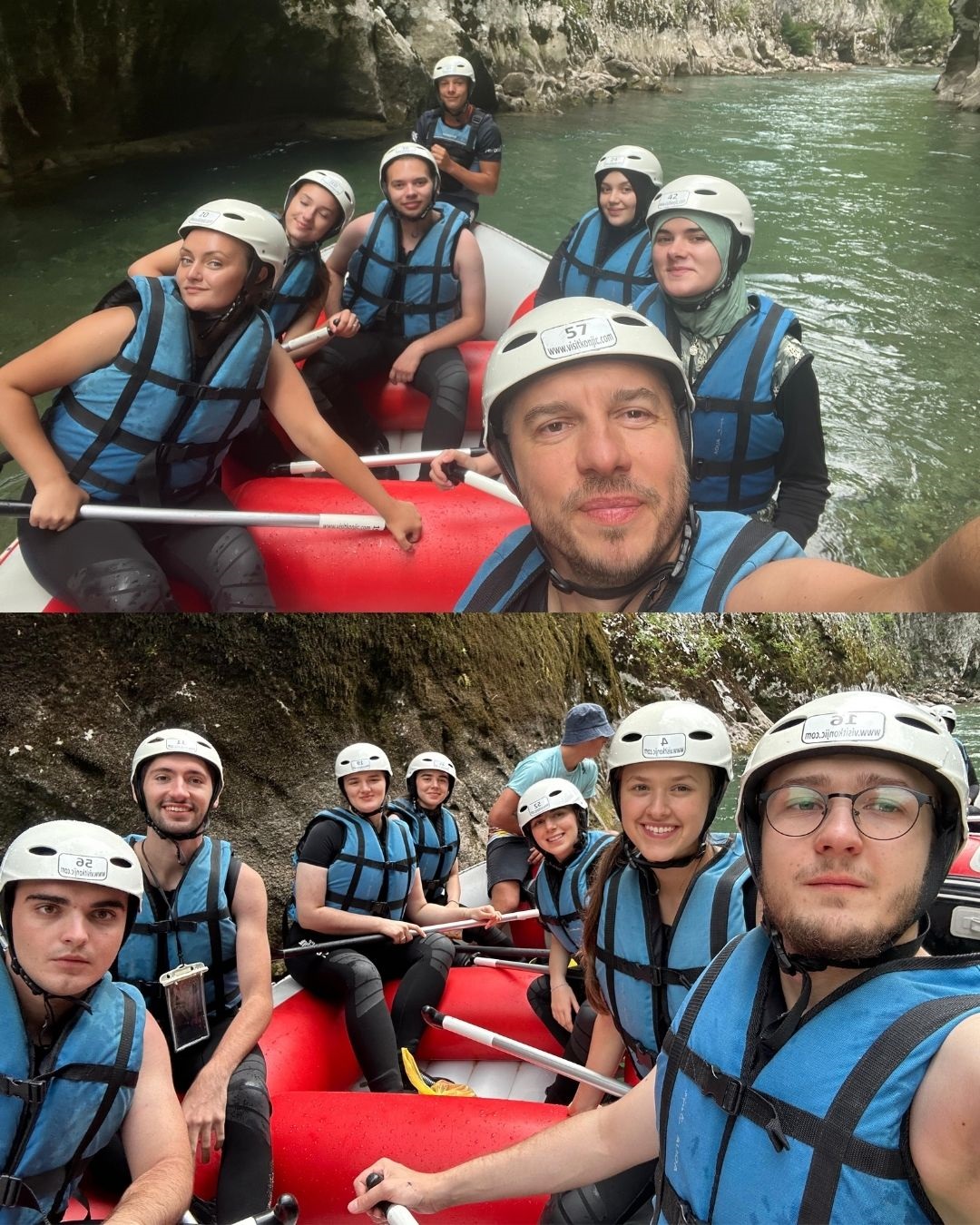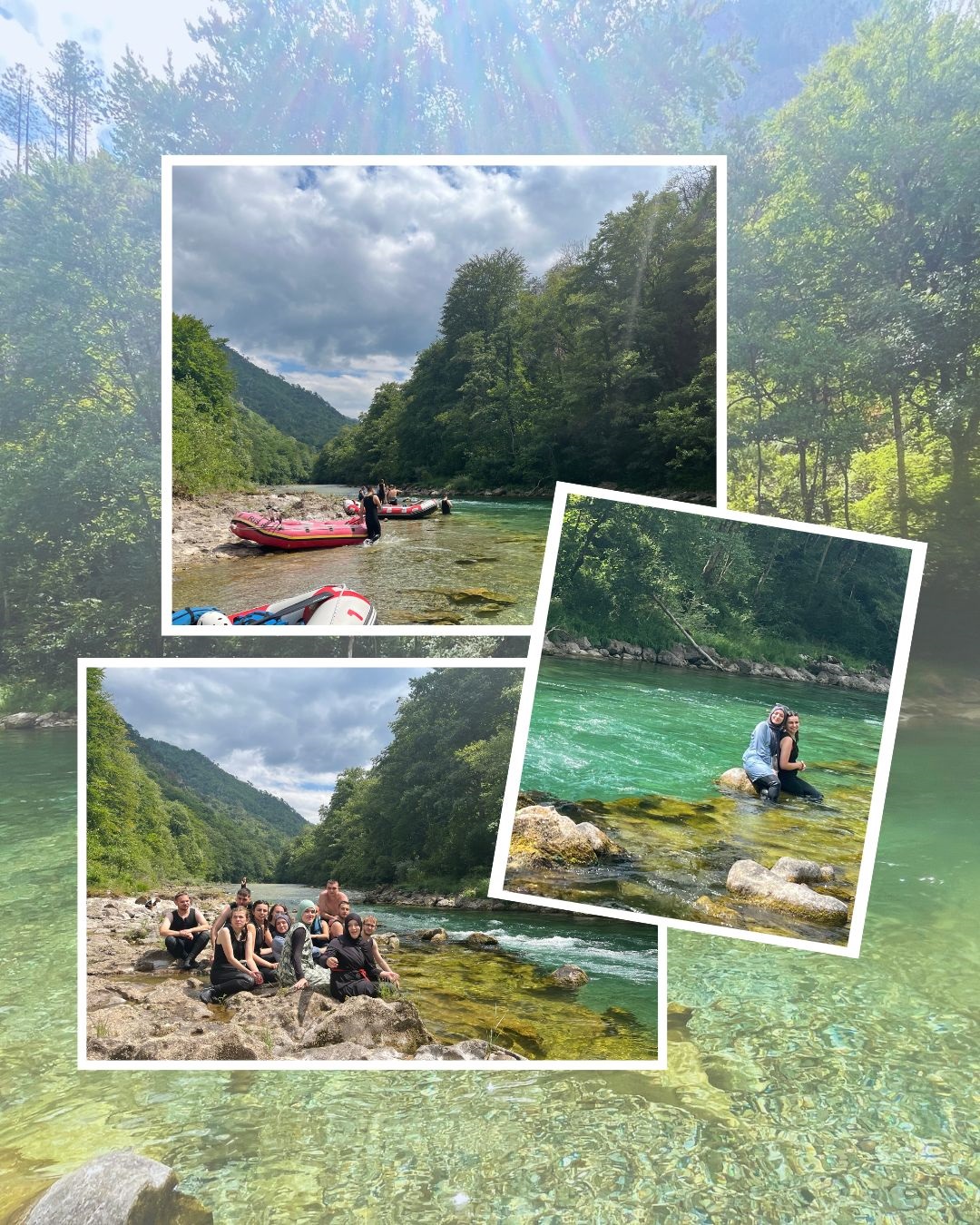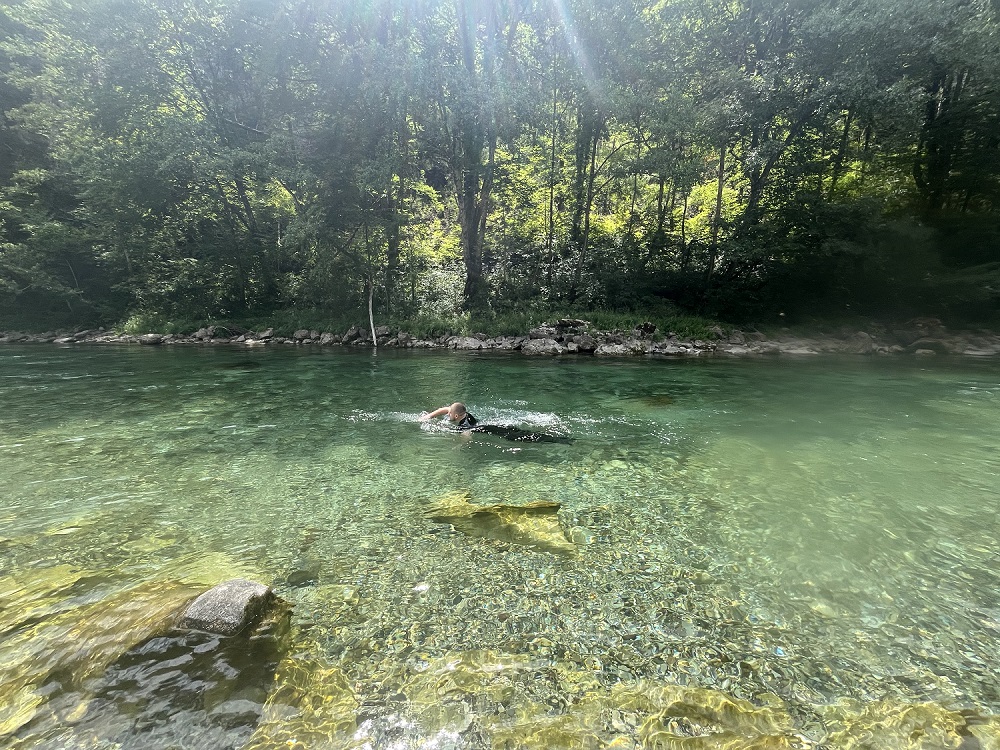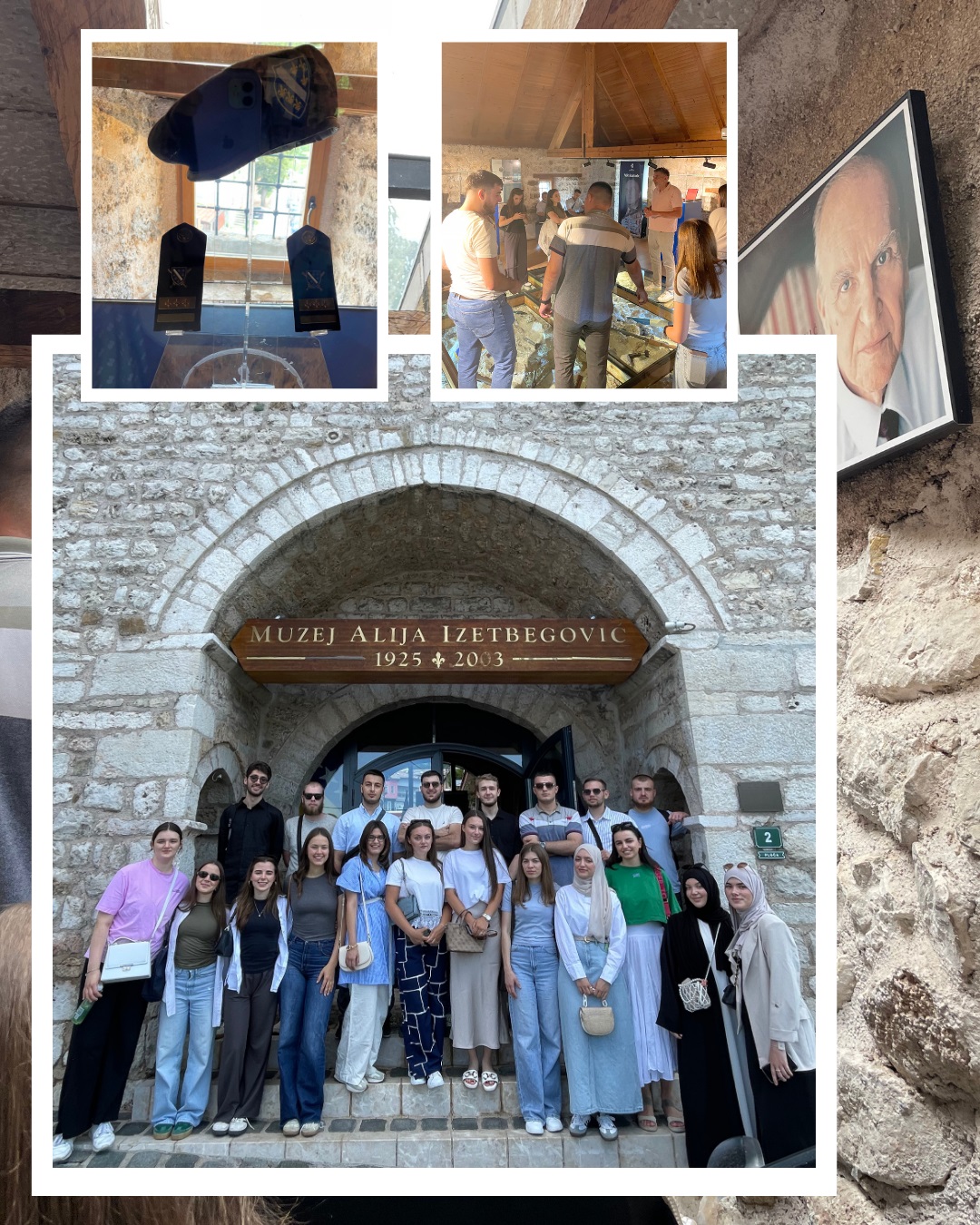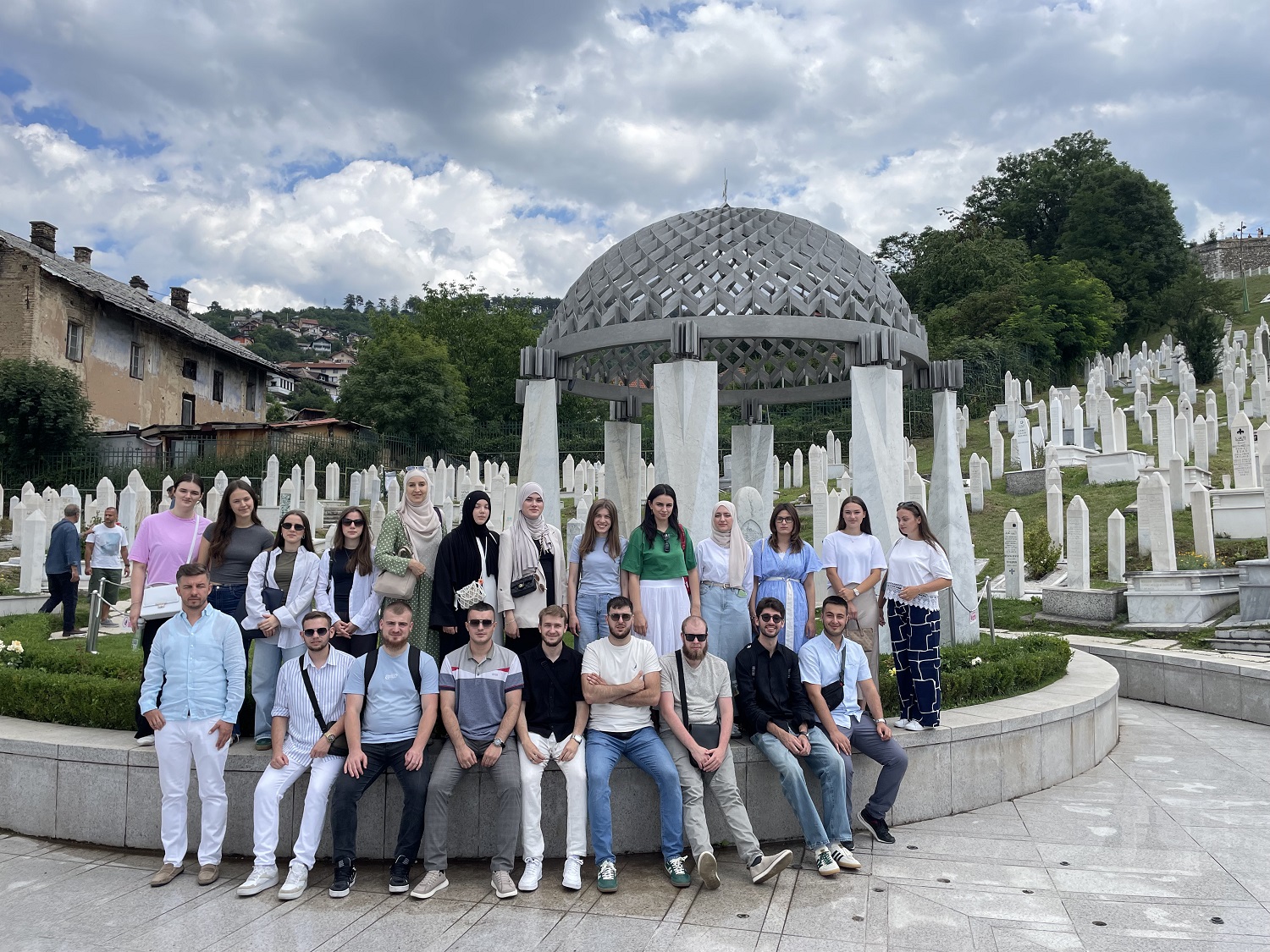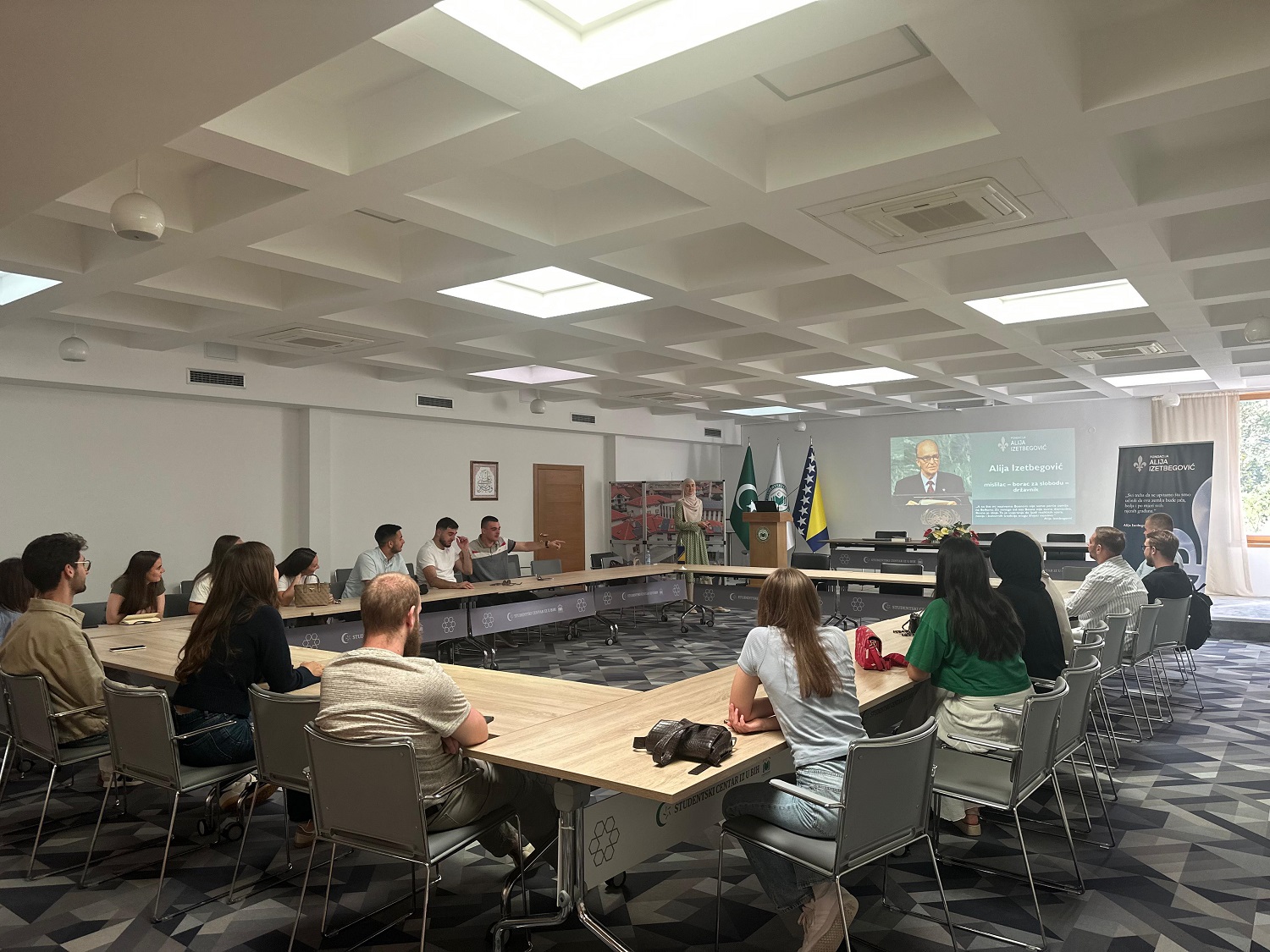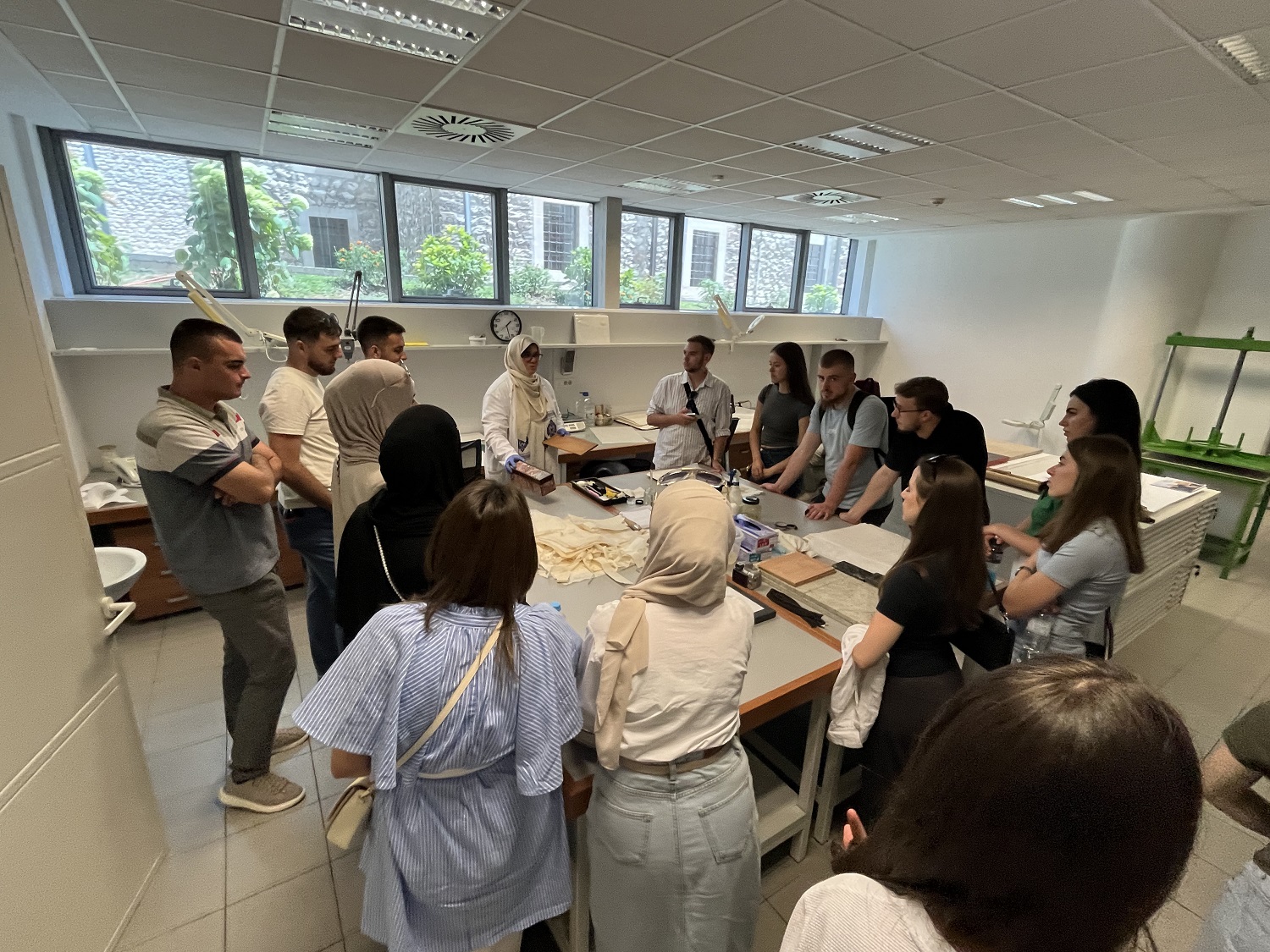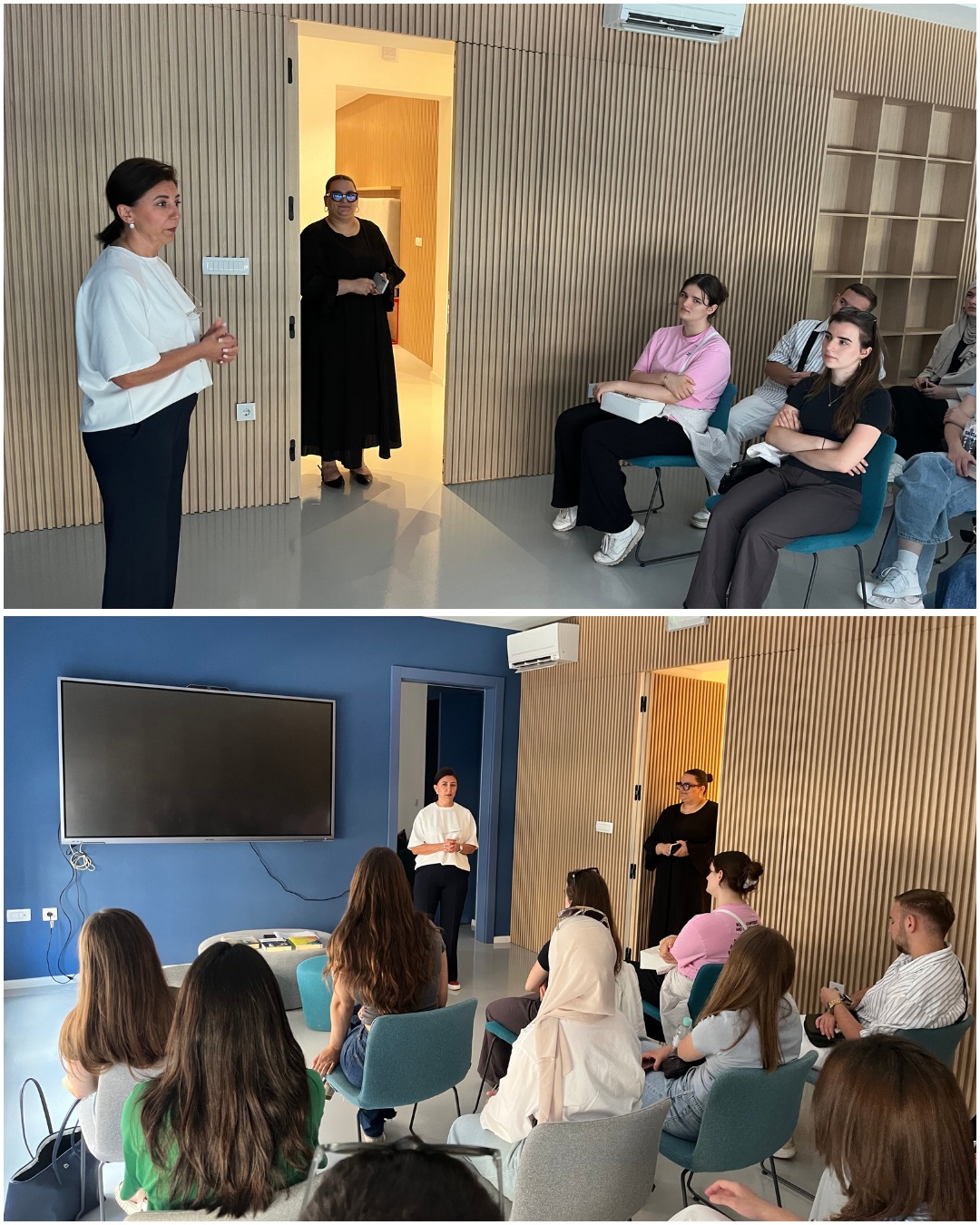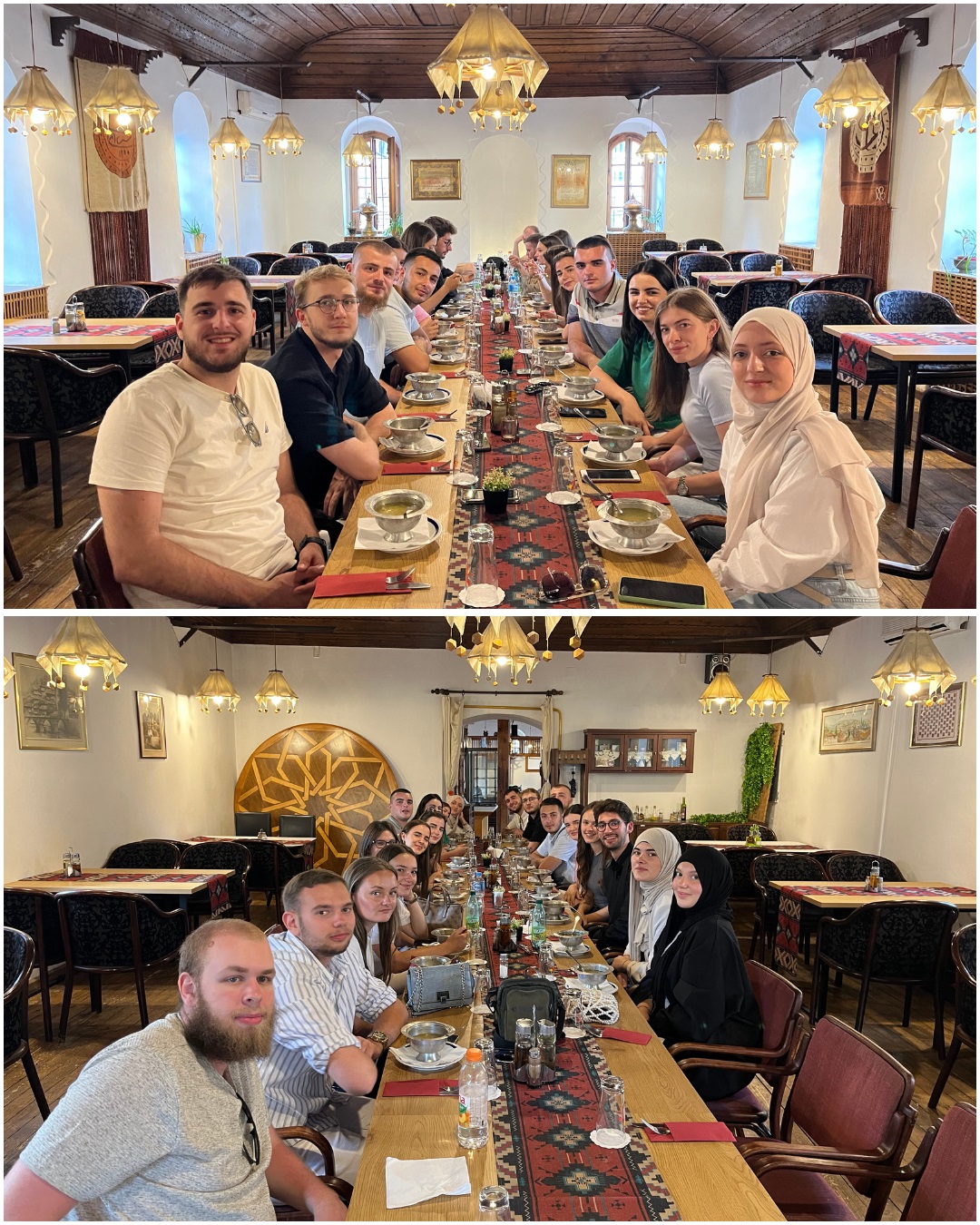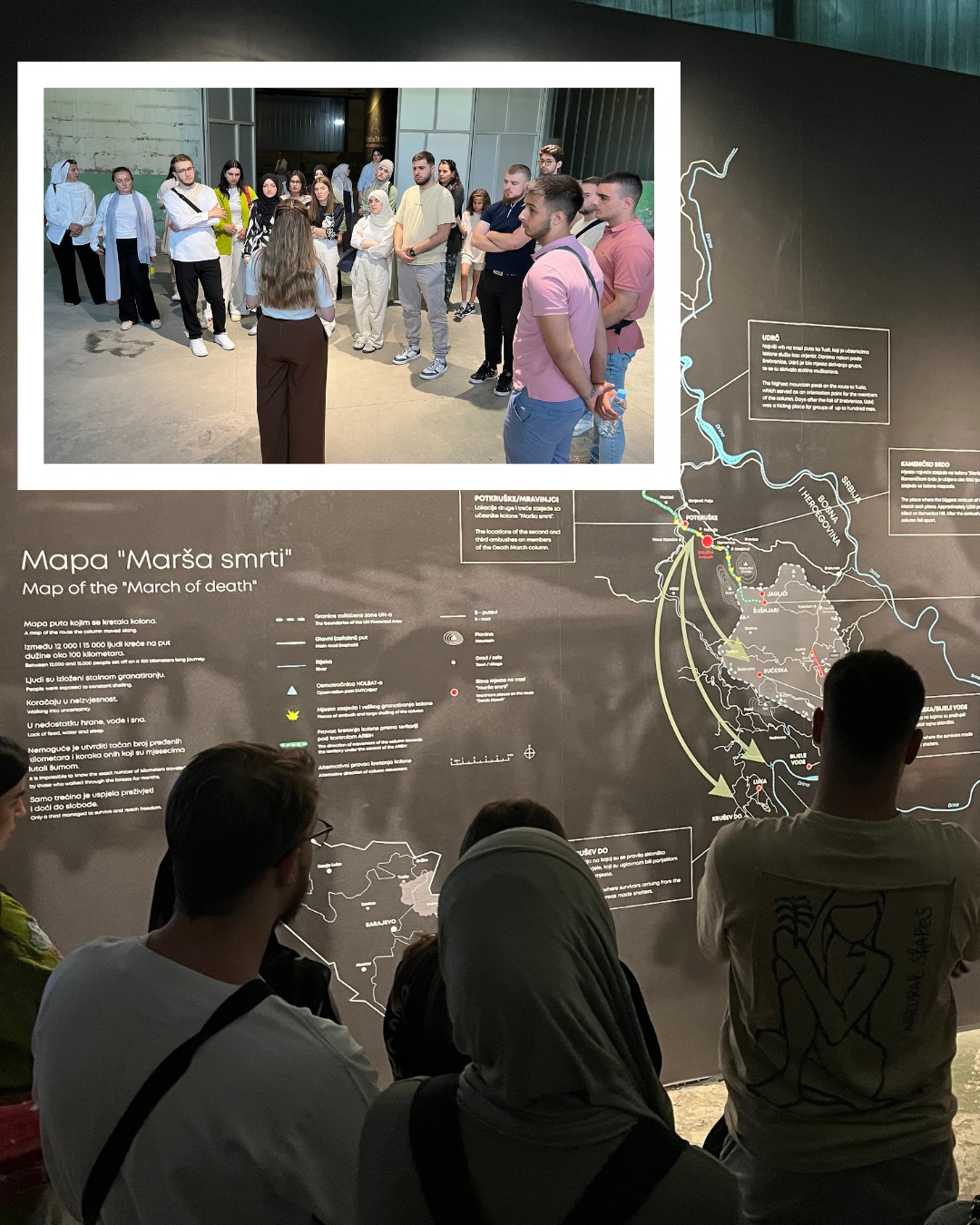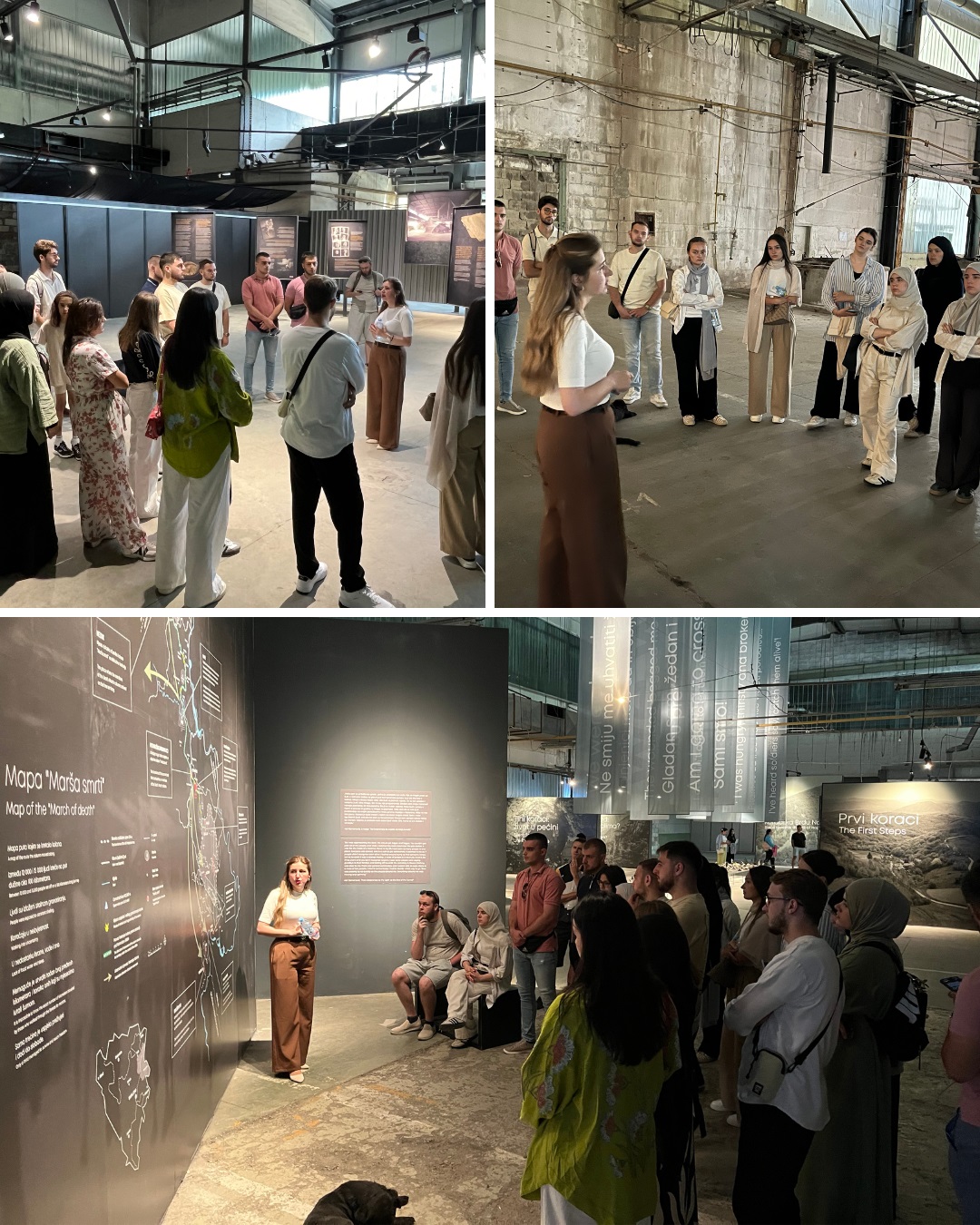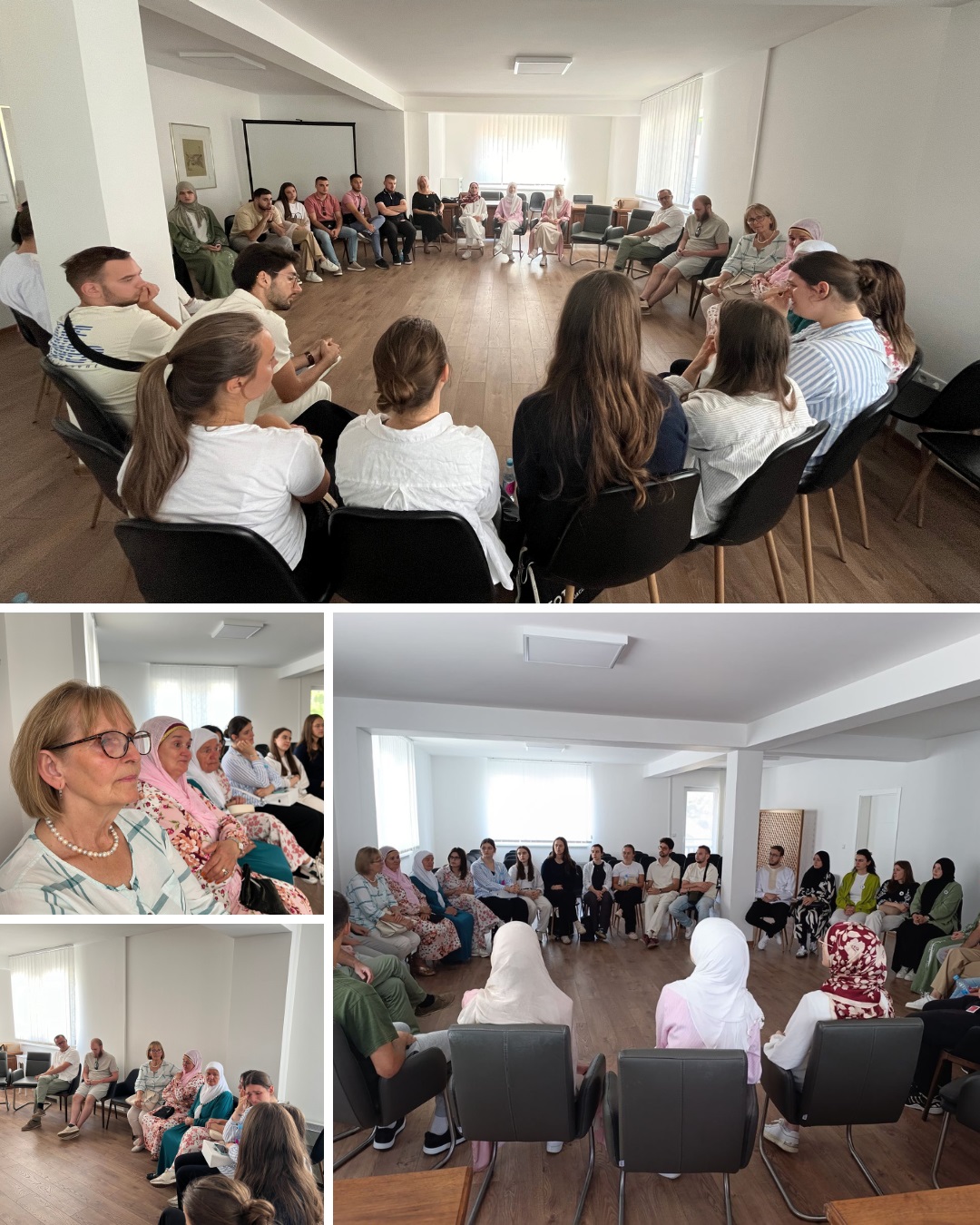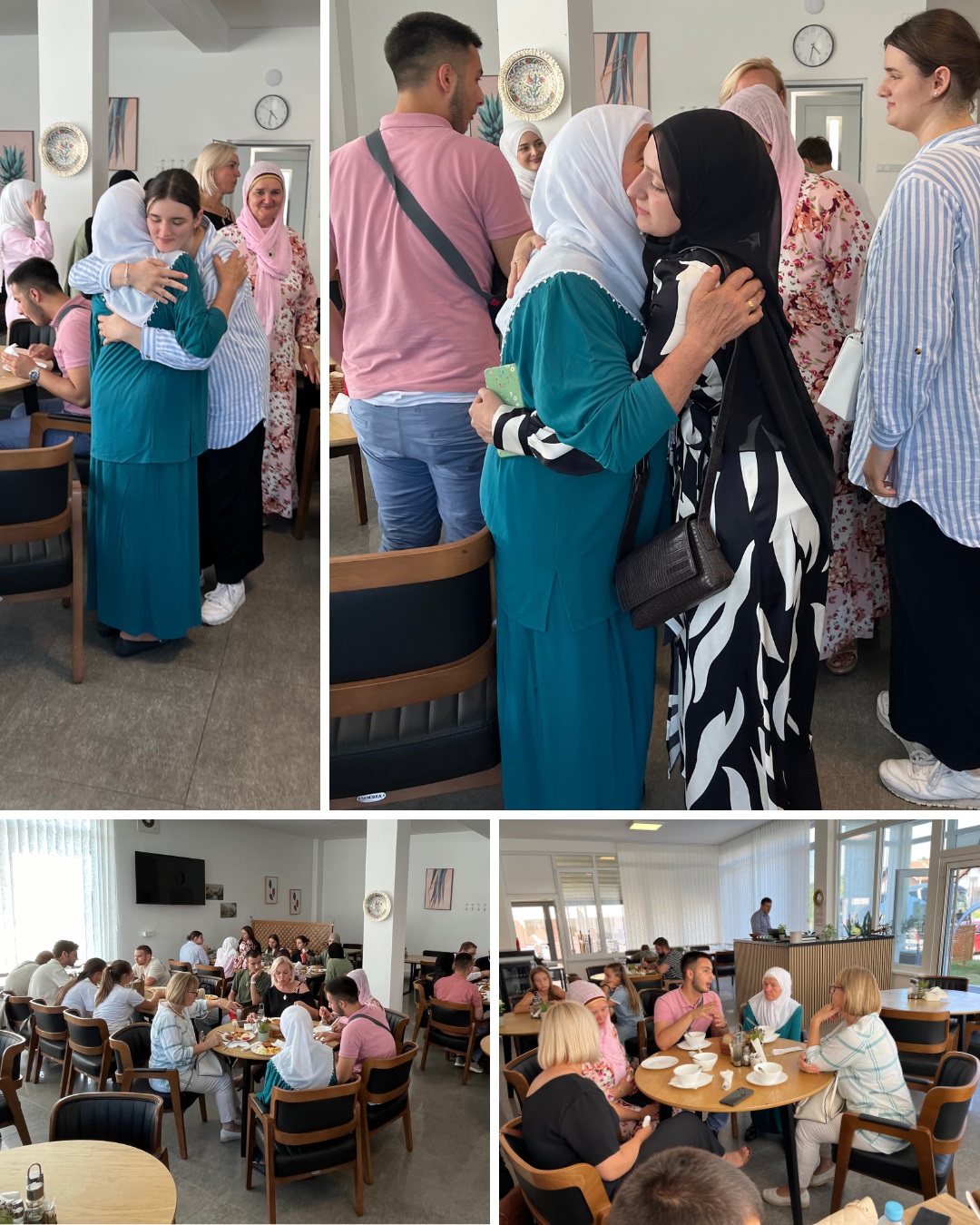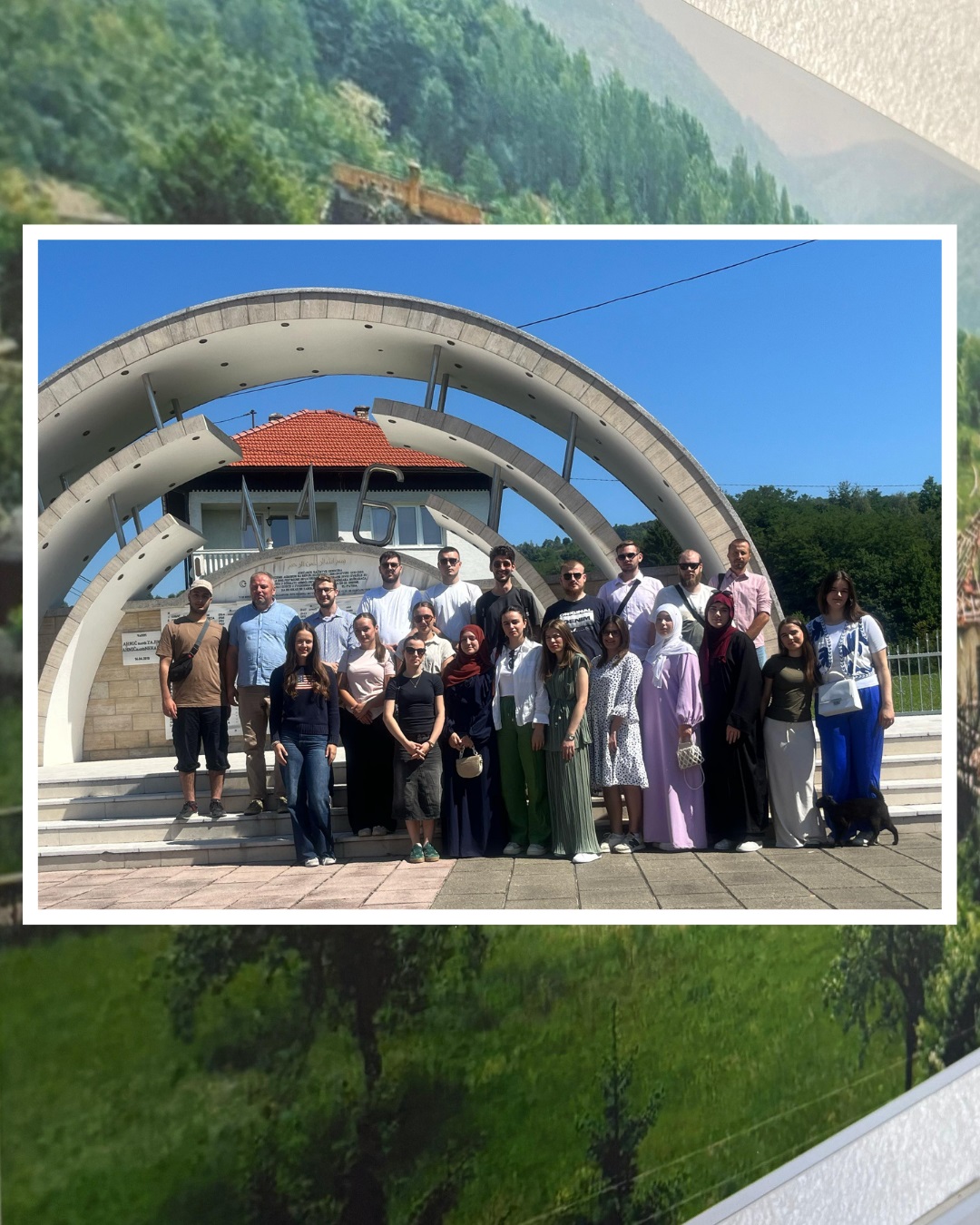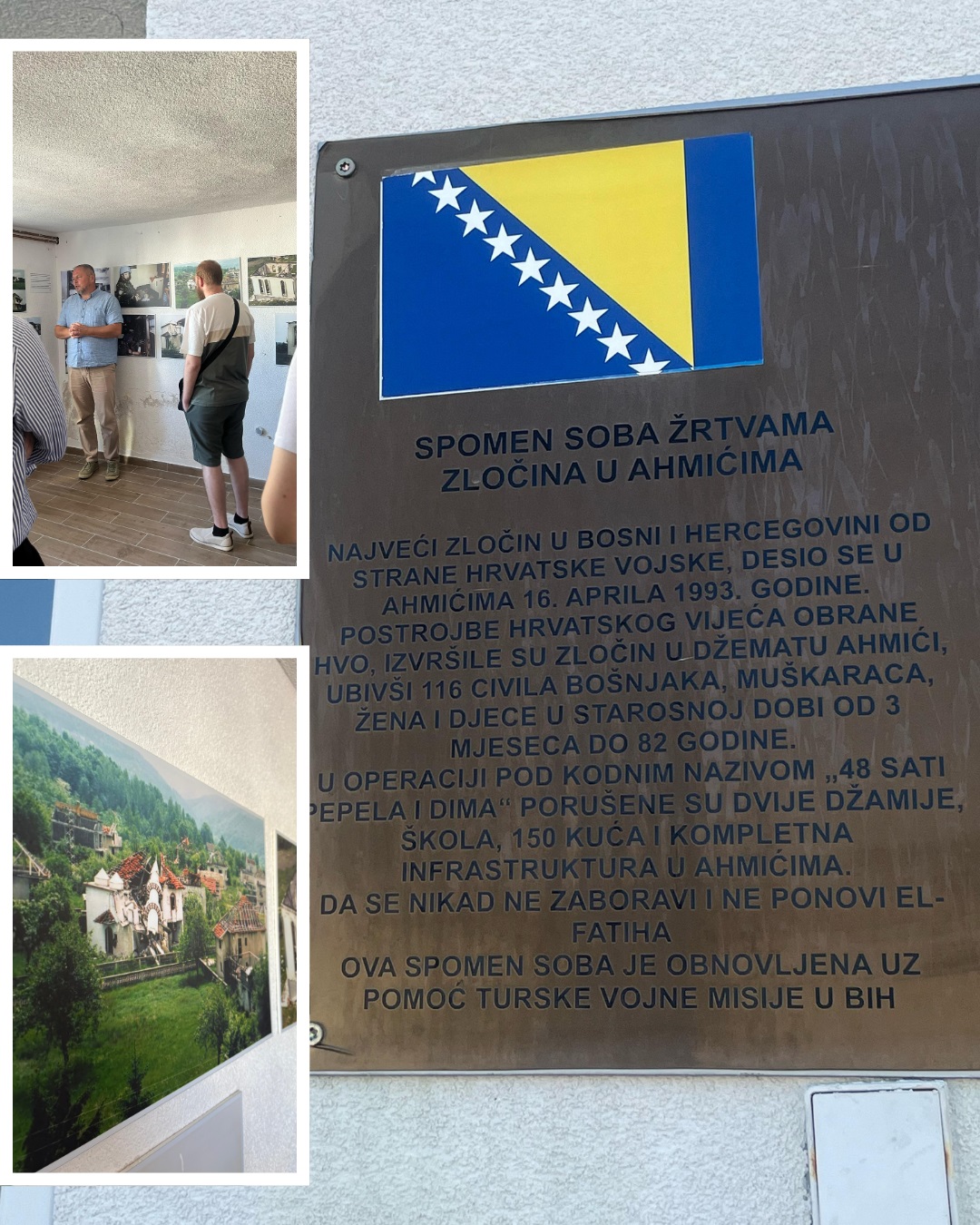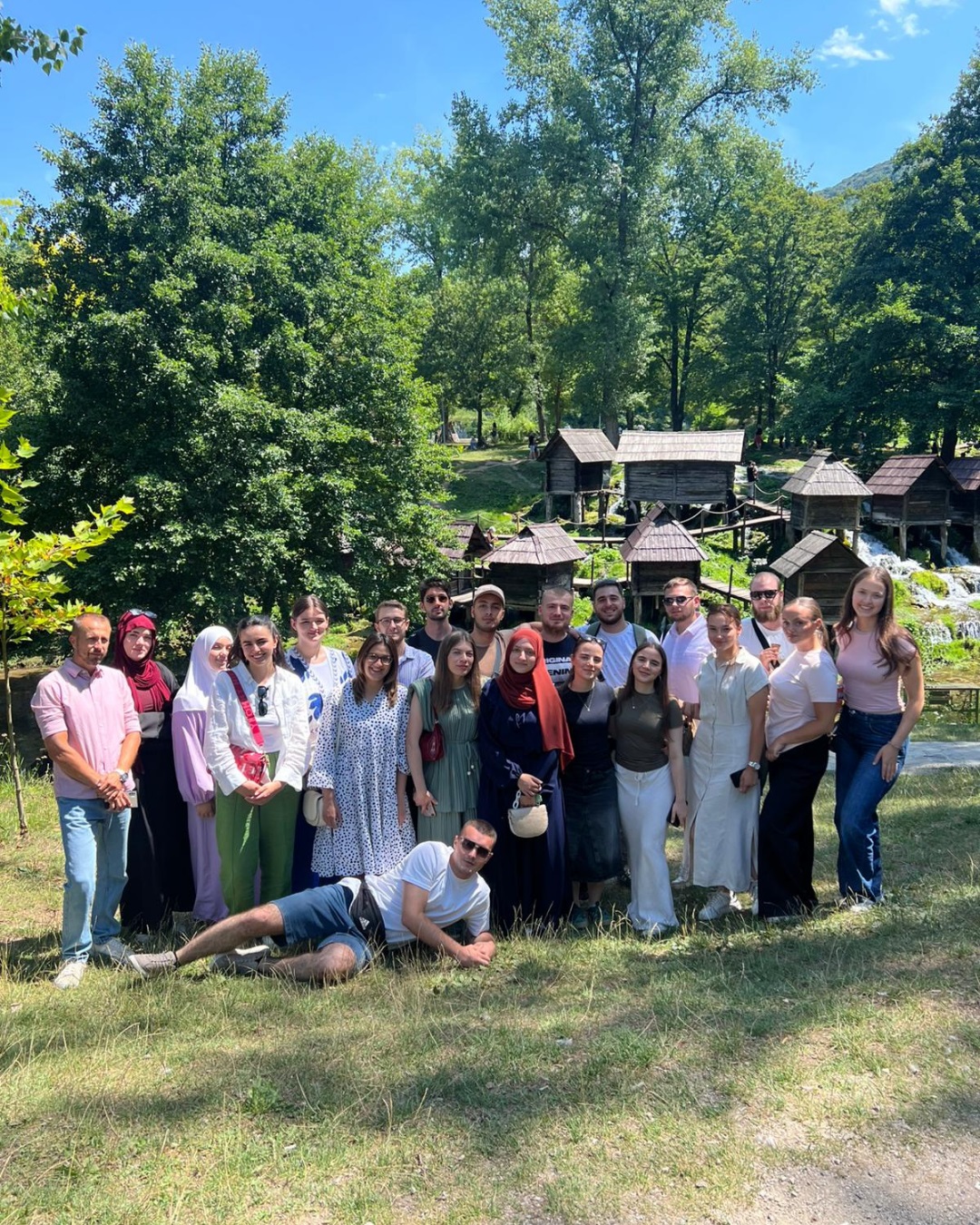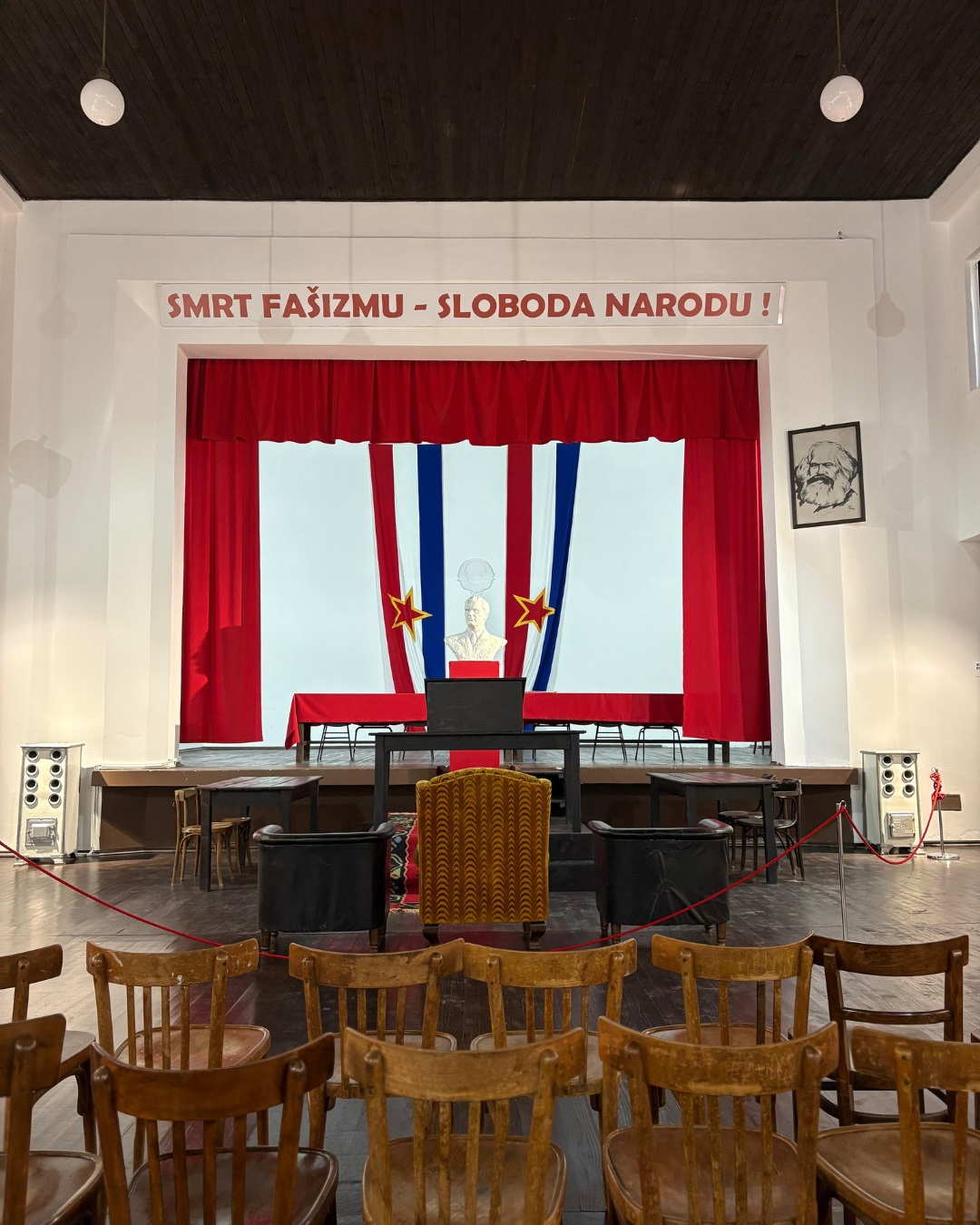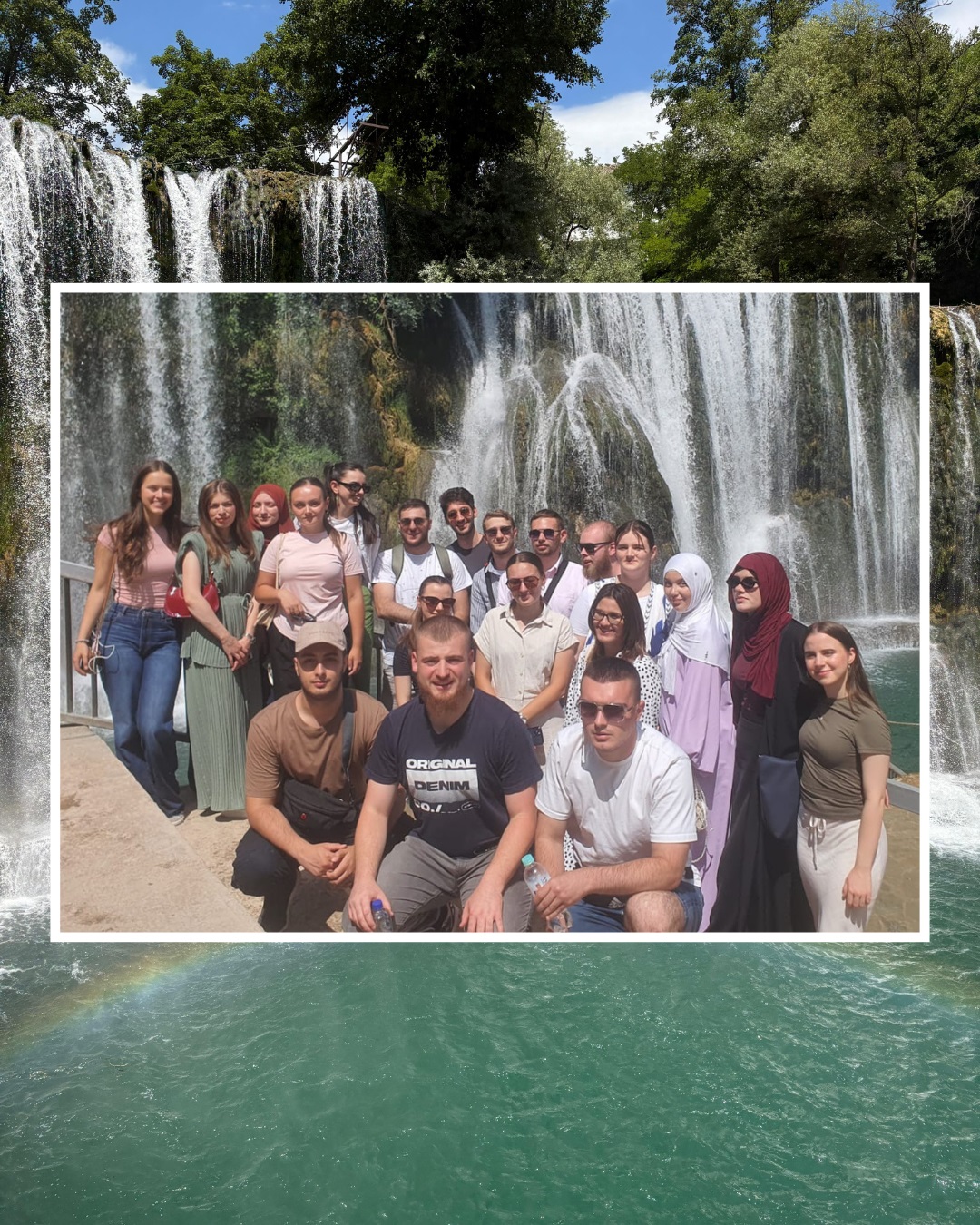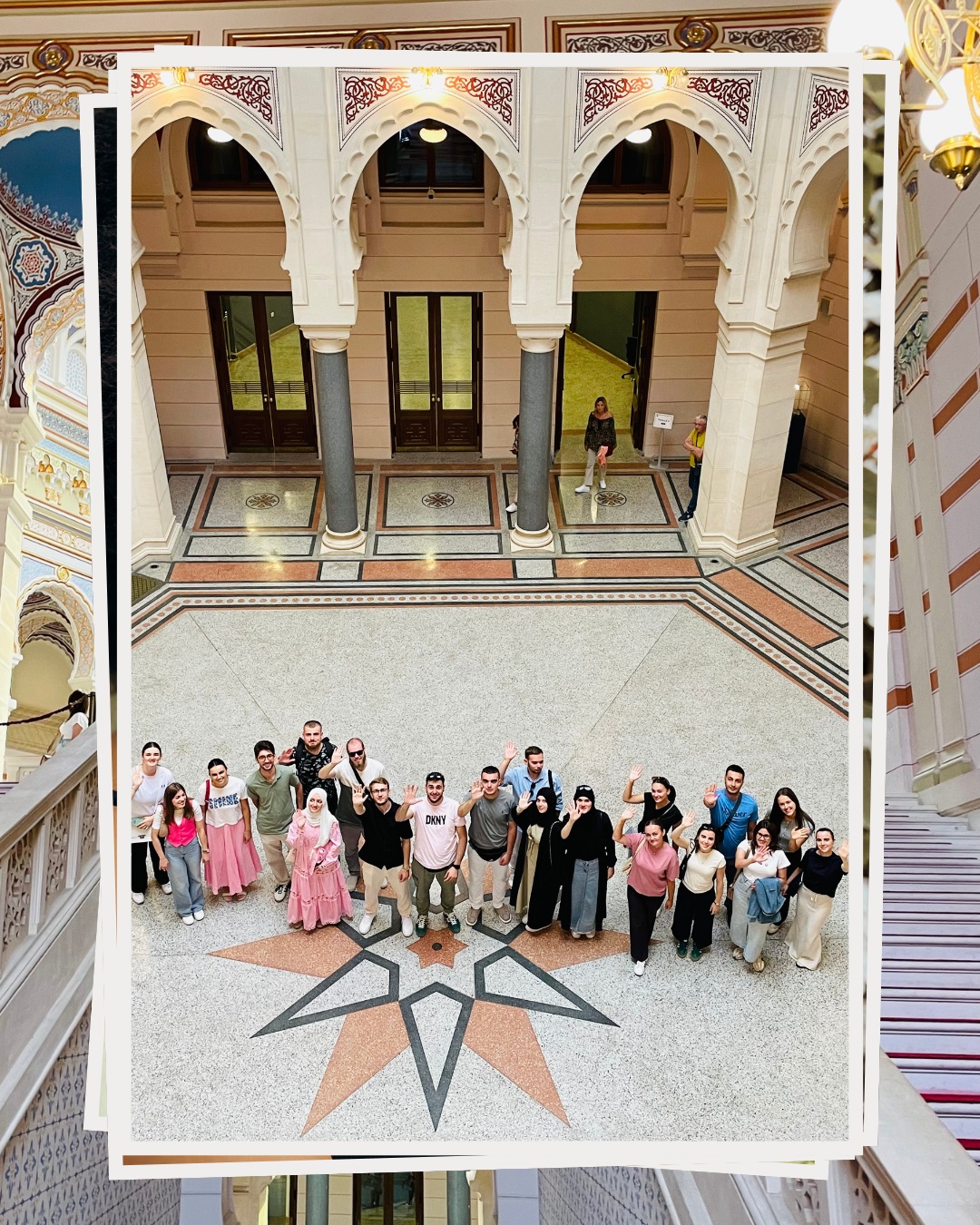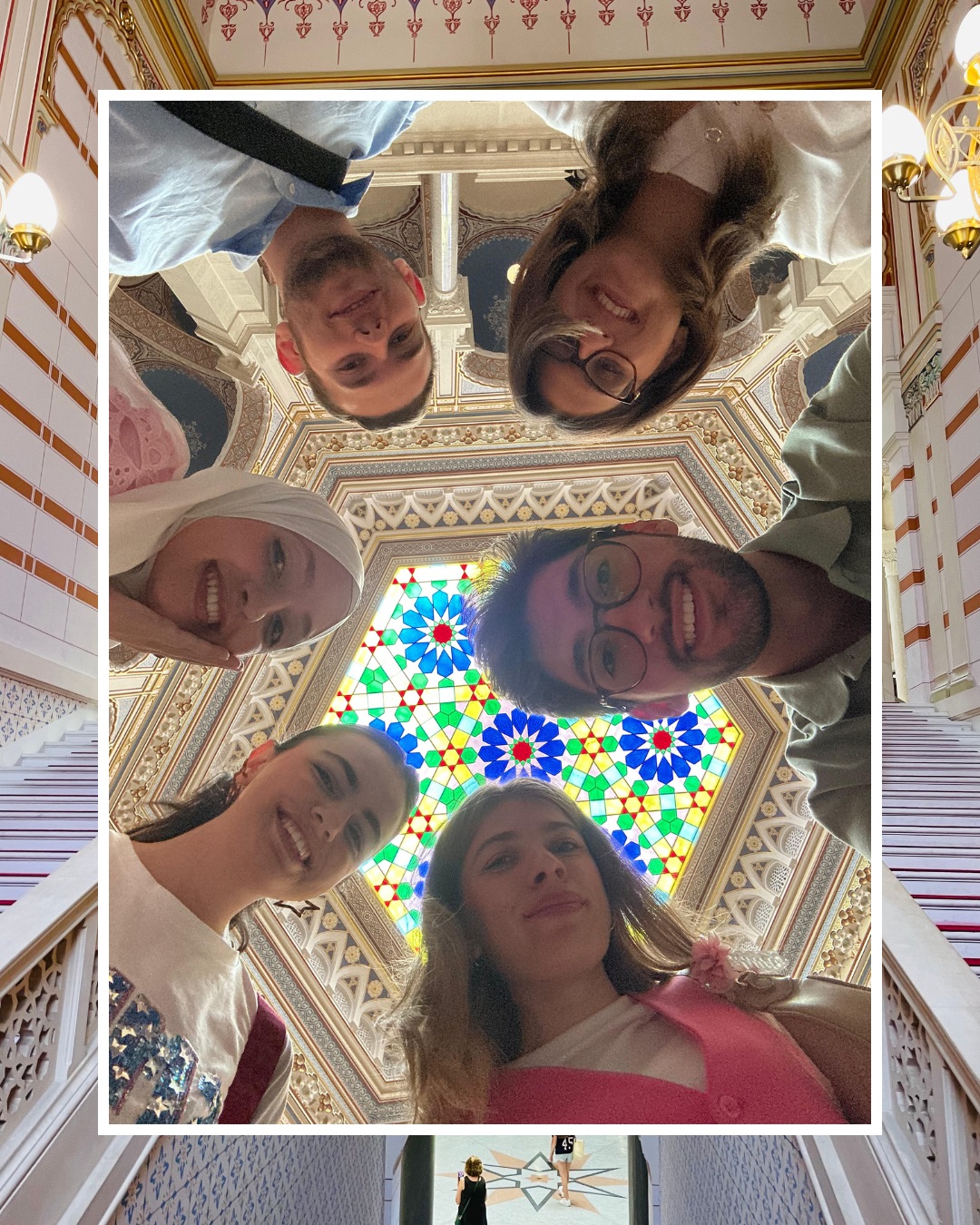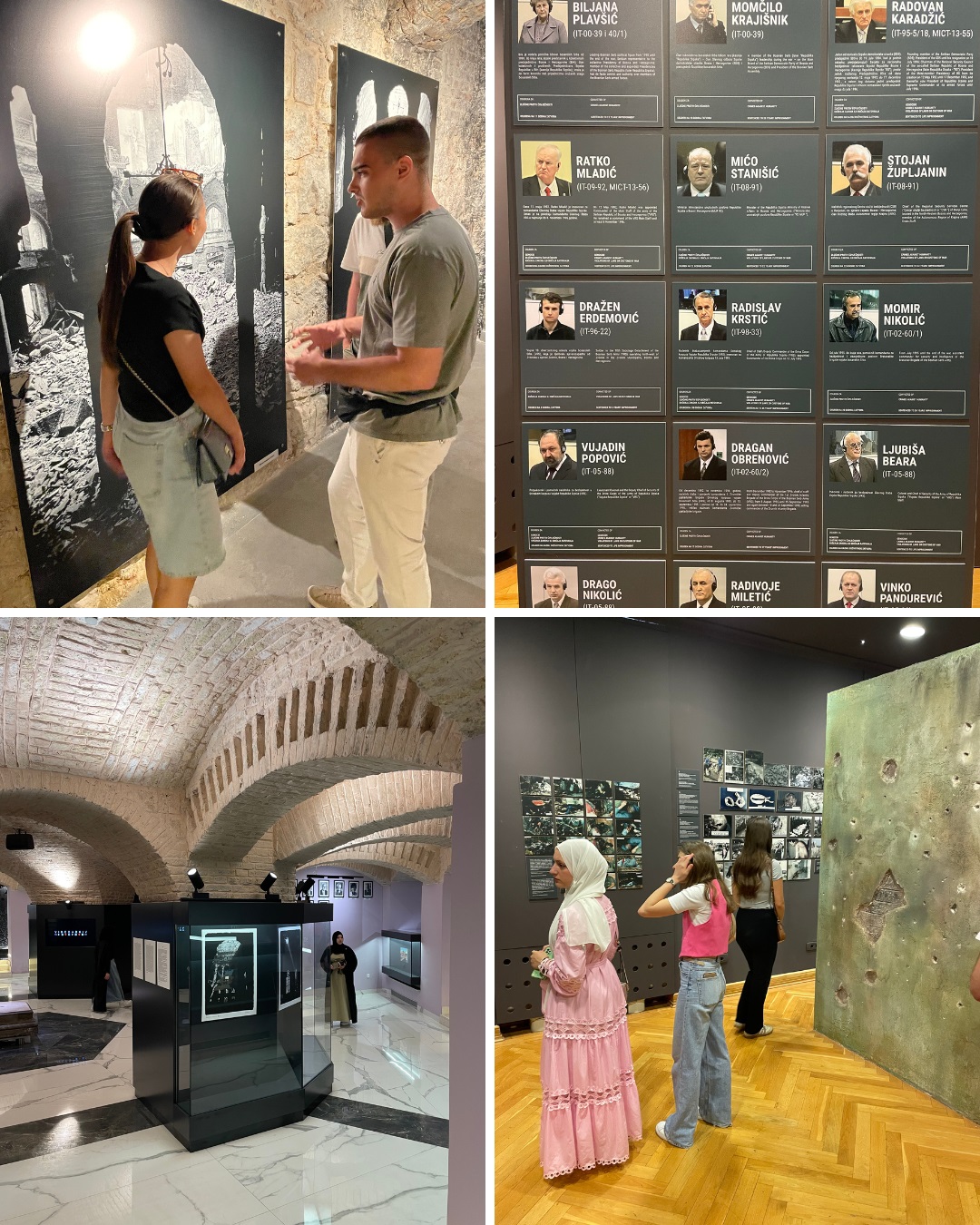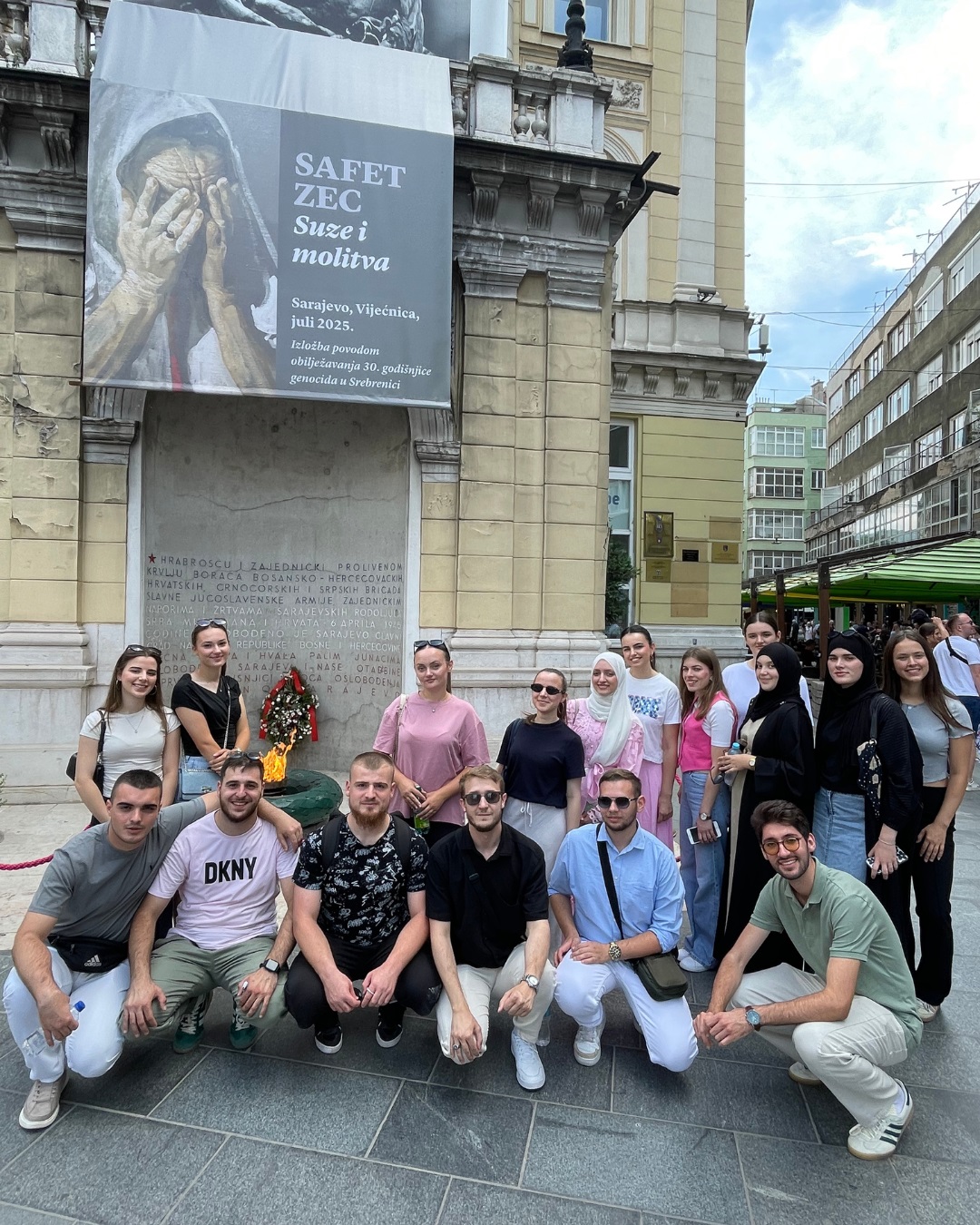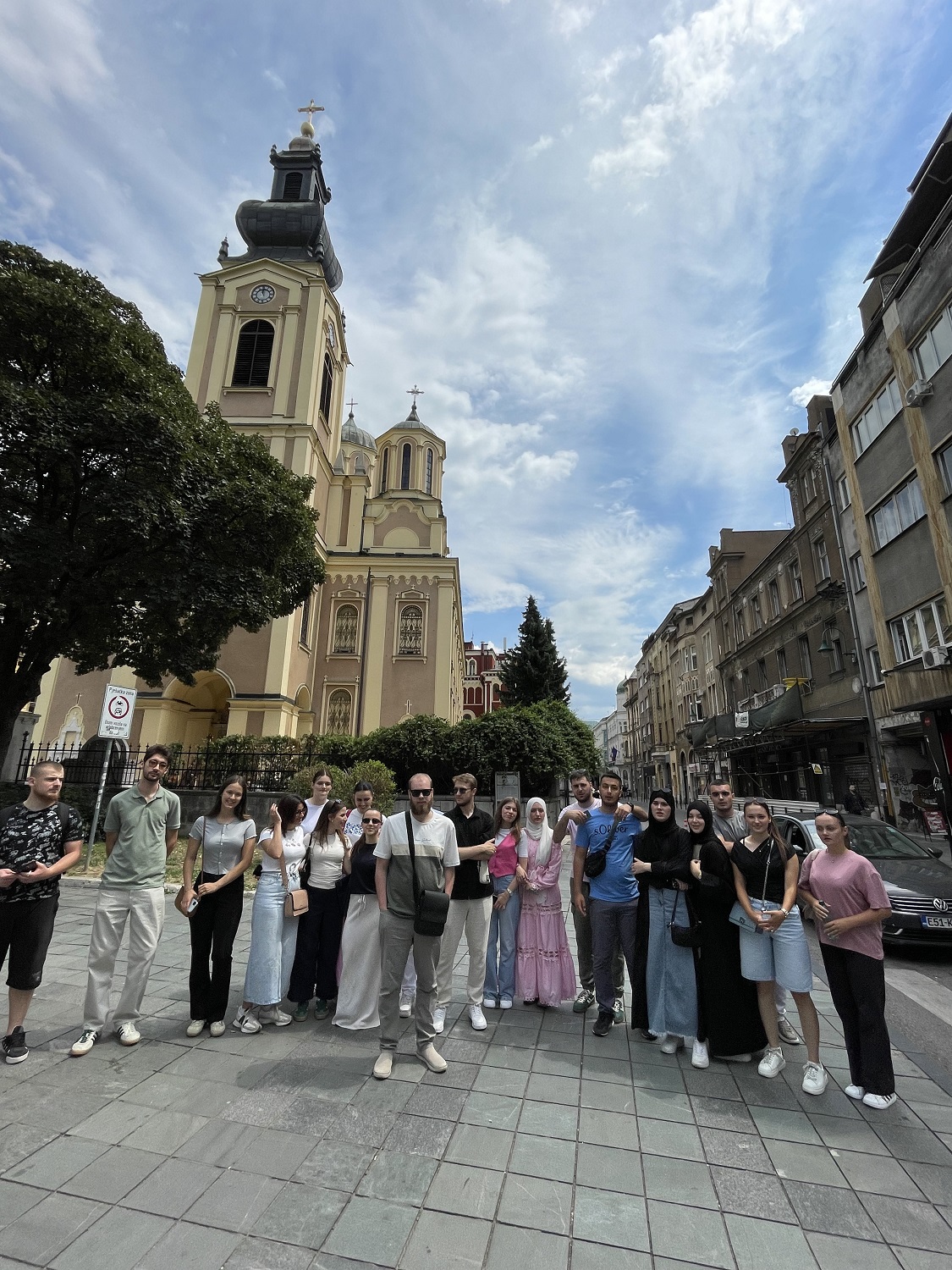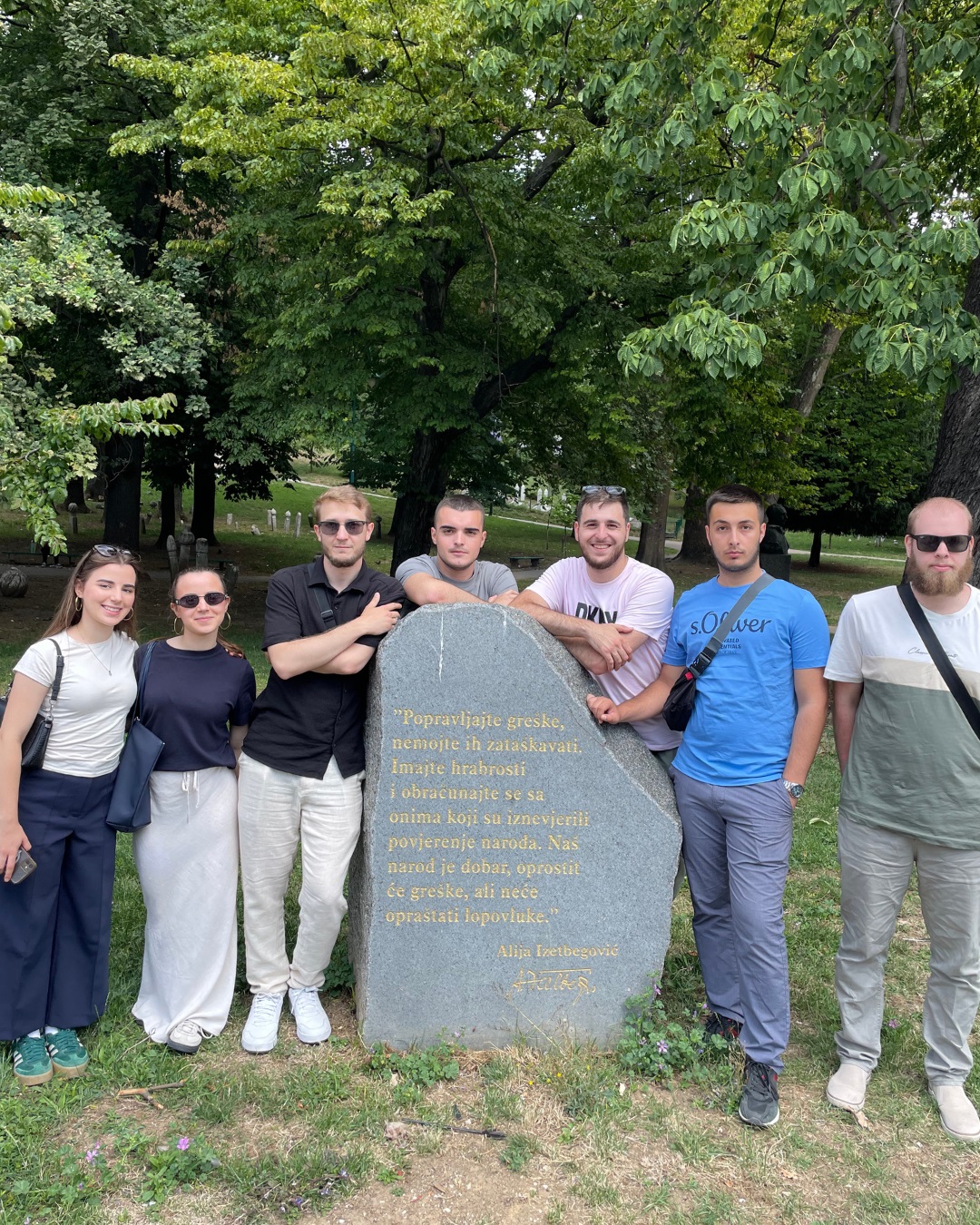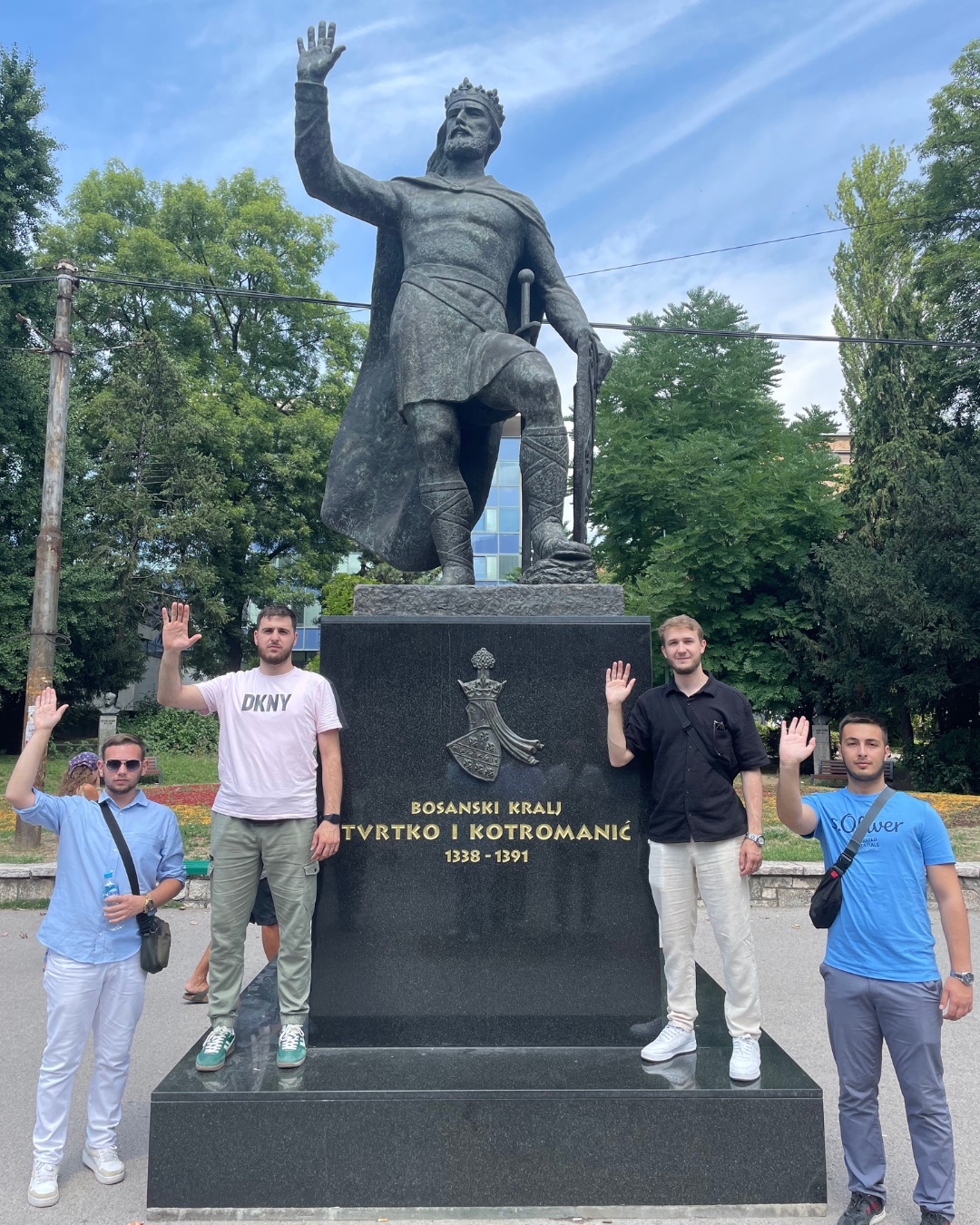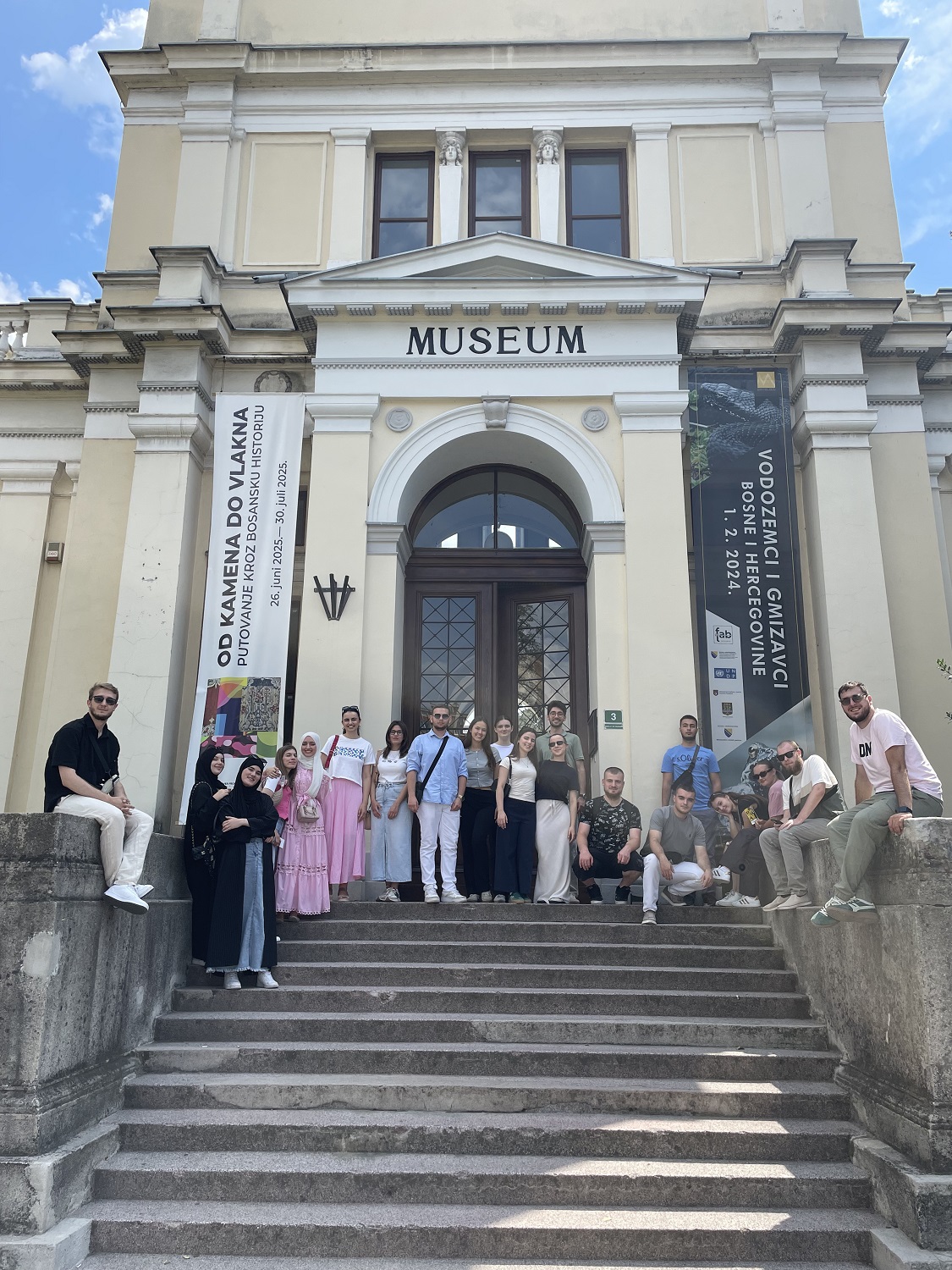Successful Completion of the 2025 Summer School for Youth from the Diaspora and the Region
The third annual Summer School for Youth from the Diaspora and the Region 2025, organized by the Alija Izetbegović Foundation and the association “IN SANA” from Germany, and supported by the Office for the Diaspora of the Sarajevo Canton Government and the Riyasat of the Islamic Community in Bosnia and Herzegovina, was successfully held from July 28 to August 3, 2025.
The goal of the Summer School was to familiarize participants with the history and culture of Bosnia and Herzegovina, as well as with the life and intellectual legacy of Alija Izetbegović. Specific goals included strengthening identity, networking among young people, and encouraging future cooperation and engagement aimed at the progress of Bosnia and Herzegovina.
On their first day in Bosnia and Herzegovina, 20 participants from Switzerland, Germany, Austria, Sweden, Serbia, and Montenegro were accommodated at the Student Center of the Islamic Community in Bosnia and Herzegovina. They then visited the Alija Izetbegović Foundation, where they were welcomed by Foundation representatives and introduced to its work and the program of the Summer School. The meeting was also attended by Mr. Emir Ibrahimagić, Head of the Office for the Diaspora of the Sarajevo Canton Government.
After lunch, they visited the administrative building of the Riyasat of the Islamic Community in Bosnia and Herzegovina at Kovači, where Medina Mehmedović-Mulalić from the Department for Foreign Affairs and the Diaspora presented the structure and work of the Islamic Community. They then toured the traditional Bosnian “Svrzo House”, a location rich in history. In the evening, Mr. Admir Lisica gave an inspiring lecture on the history of Bosnia and Herzegovina. The evening ended with dinner and a walk through the city, during which participants shared their impressions.
On Day Two, the group began with breakfast and an early departure to the Tunnel of Hope, a powerful symbol of Sarajevo citizens’ bravery and endurance during the siege.
Following the visit, the group traveled to the town of Blagaj, where they explored the famous Blagaj Tekke and enjoyed lunch on the banks of the Buna River.
In the afternoon, they arrived in Mostar, settled into a dormitory, and had free time to walk and explore the city.
Day Three was a combination of history and adventure.
The day began with a visit to Tito’s Bunker, a secret military facility from the former Yugoslavia, offering insights into the complex political and security context of that era.
After this historical exploration, the group went rafting on the Neretva River, a thrilling experience full of laughter, teamwork, and unforgettable natural beauty.
Day Four was dedicated to memory, knowledge, and cultural identity.
The morning began with a lecture on the life of Alija Izetbegović, the first President of the Presidency of independent Bosnia and Herzegovina. Afterwards, participants visited the Alija Izetbegović Museum and his grave at the Kovači Martyrs’ Cemetery, where they paid respects and offered prayers.
Next, they toured the Gazi Husrev-bey Library, gaining insight into its vast archives and the conservation and restoration of valuable historical manuscripts.
A special part of the day was a lecture and discussion on the Bosnian language, held by Professor Leila Hamzagić-Kovačević in the beautiful setting of the Youth Center of the Sarajevo Majlis. This session emphasized the crucial role of language in preserving identity and tradition.
The day concluded with a traditional lunch in Baščaršija, where the group enjoyed the local atmosphere and surroundings.
On Day Five, participants visited the Srebrenica-Potočari Memorial Center, where they engaged with exhibitions, documents, and testimonies of survivors, deepening their understanding of the Genocide against Bosniaks and the enduring pain of Srebrenica.
A particularly moving moment was the conversation with Srebrenica mothers and genocide survivors at Potočari Han. Through their words, expressions, and silences, they conveyed stories of loss, dignity, and the strength to carry and share the truth.
Over a shared lunch and heartfelt conversations, bonds were formed — serving as a reminder that compassion, respect, and remembrance know no boundaries.
Day Six offered a blend of natural beauty, history, and lessons from the past. The group was guided by Professor Alem Kadrić, a historian.
The day started with a visit to Ahmići, a place that testifies to the tragic events of the recent aggression but also to the strength of a community that remembers and rebuilds.
They then visited Mlinčići, beautiful watermills on the Pliva River, where participants connected with traditional ways of life and nature.
In Jajce, the youth visited the magnificent waterfall — a symbol of the town — and the AVNOJ Museum, where they learned about key moments in Bosnia and Herzegovina’s modern political history.
The day ended with a joint lunch at Vlašić House, in a pleasant and relaxed atmosphere.
The seventh and final day of the Summer School was marked by shared reflections and a walk through Sarajevo.
The group visited the Sarajevo City Hall and its museum, learning about the rich cultural and political history of this iconic building.
After a walk through the city, they visited the National Museum of Bosnia and Herzegovina, a true treasury of knowledge and heritage.
In the evening, a closing gathering was held, where the youth shared their impressions and experiences from the previous week.
The week concluded full of new knowledge, experiences, and friendships that, we hope, will last a long time.
We are very pleased that the Summer School project was successfully implemented, and on behalf of the Alija Izetbegović Foundation, we extend our gratitude to our partner organization “IN SANA” from Germany.
The project was supported by the Sarajevo Canton Government Office for the Diaspora and the Riyasat of the Islamic Community in Bosnia and Herzegovina.
ALIJA IZETBEGOVIĆ FOUNDATION
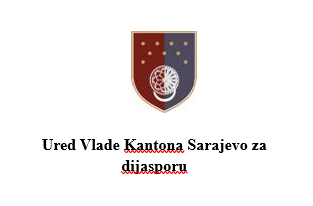 |
 |

